- Anne Jacoby, CEO, Spring Street Solutions




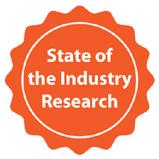

MARCH 2023 • Vol.10 • No.03 (ISSN 2564-1999) TODAY’S HUMAN EXPERIENCE AT WORK NEEDS A MOTIVATION GUT-CHECK
The State of Human Experience in the Workplace 2023 Page 23 - 46 Sponsored by
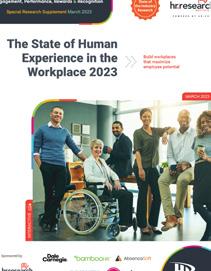
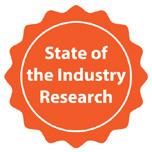
Today’s Human Experience At Work Needs A Motivation Gut-Check The state of the human experience in our workplace will continue to evolve - Anne Jacoby, CEO, Spring Street Solutions 07 INDEX On the Cover Human Experience Excellence - Engagement, Performance, Rewards & Recognition MARCH 2023 Vol.10 No.03 Articles The State of Human Experience in the Workplace 2023 Page 23 - 46 (ISSN 2564-1999) 18 How To Create A Culture Of Innovation Boards can lead by example in encouraging a culture of innovation - Fennemiek Gommer Founder and Anne Mieke Eggenkamp, Partner, Caracta Business Innovation 47 5 Reasons American Industry Needs ‘Active Listening’ Now More Than Ever Top strategies to address the issue - Merilee Kern, Founder, The Luxe List 56 Closing The Gender Gap: Prioritizing Inclusivity In The Workplace The case of the missing talent - Stephen Paskoff, President and CEO, ELI, Inc. 61 Authentic DEI. It Makes All The Difference 5 ways to demonstrate DEI authenticity - Natasha Nicholson, Director of Content Marketing, Kantola Training Solutions
13 Tactics Employers Are Using To Improve The Employee Experience
From conducting stay interviews to offering a yearly stipend, the list continues
- Brett Farmiloe, Founder and CHRO, Terkel.io
Top Picks 10 21









Navigating The Challenges Of Hybrid Workforce With High-Bred Leaders
Enhancing the employee experience

- Dr. Beverly Kaye, Founder and CEO, BevKaye&Co.
A Few Hard Truths About Employee Engagement Surveys

Pitfalls to avoid and strategies to keep engagement high
- Yoram Solomon, Founder, Innovation Culture Institute™ LLC.
50 58

Upskilling And Diversifying Talent Pipelines
Essential strategies for employers in a changing job market
- Connor Diemand-Yauman and Rebecca Taber Staehelin, Co-Founders and Co-CEOs, Merit America
INDEX
Human Experience Excellence - Monthly Interactive Learning Journal


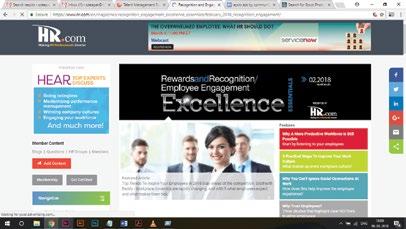
The future is all about going beyond the employee experience to focus on human experience. This monthly interactive learning experience showcases strategies and programs to improve employee performance and strengthen your team.
Human Experience Virtual Events
Virtual Events in the Recognition and Engagement track will give you everything you need to recognize and reward employees creating an inspired workforce and organization that will drive innovation and boost productivity. Sessions feature the world’s top thought leaders in the recognition and engagement space covering topics from customer loyalty, safety, sales, company culture and motivation to what makes an effective and efficient results-based program. Each Virtual Event consists of up to 10 credit webcasts.
Human Experience Webcasts for Credit
HR.com webcasts deliver the latest Recognition and Engagement industry news, research trends, best practices and case studies directly to your desktop. Webcasts are available live online with a downloadable podcast and a copy of the slides (PDF) available before and after each webcast. Earn all of the required recertification credits for aPHR, PHR, SPHR, GPHR, and SHRM Certifications. HR.com’s one-hour webcasts, in every HR specialty including HRIS and Payroll, are pre-approved for HRCI and SHRM credit (excluding Demo webcasts).
IHR Rewards and Recognition Community
Join almost 25,600 HR.com members with a similar interest and focus on rewards and recognition. Share content and download research reports, blogs, and articles, network, and “follow” peers and have them “follow” you in a social network platform to communicate regularly and stay on top of the latest updates. This well established Rewards and Recognition Community is an invaluable resource for any HR professional or manager.
SEP 2017 Vol. 5 No. 09 JANUARY 2021 Vol.08 No.01 18 12 25 30 Digital Is All The Rage: Why Employee Rewards Must Include Digital Options In 2021 - Theresa McEndree, Blackhawk Network Employee Experience Trends In 2021Tips To Increasing Your Reward And Recognition Strategies Post-Covid - Richelle Taylor, One10 How To Create Meaningful - Mike Byam, Terryberry HOW TO EMBRACE THE SHIFTS THAT OCCUR AS WE RETURN TO A NEW NORMAL WORKPLACE Key workplace trends for 2021 - David Roberts, Chief E�ecutive �fficer, �lchemer �hemed Edition on Agile Reward & Recognition Strategies How are our Human Experience Products and Services helping to make you smarter? Use these invaluable Human Experience resources today! For more information phone: 1.877.472.6648 | email: sales@hr.com | www.hr.com
Editorial Purpose
Our mission is to promote personal and professional development based on constructive values, sound ethics, and timeless principles.
Excellence Publications
Debbie McGrath CEO, HR.com - Publisher
Sue Kelley Director (Product, Marketing, and Research)
Babitha Balakrishnan and Deepa Damodaran
Excellence Publications Managers and Editors
Human Experience Excellence Team
Babitha Balakrishnan Editor
Arun Kumar R Design and Layout (Digital Magazine)
Chandra Shekar A K Magazine (Online Version)
Submissions & Correspondence
Please send any correspondence, articles, letters to the editor, and requests to reprint, republish, or excerpt articles to ePubEditors@hr.com
For customer service, or information on products and services, call 1-877-472-6648
Debbie Mcgrath Publisher, HR.com
Babitha Balakrishnan Editor, Human Experience Excellence

Prioritizing Employee Experience and Diversity, Equity, and Inclusion
Themodern workplace has undergone significant changes in recent years, with advancements in technology, a surge in demand for top talent, and record-low unemployment rates. As a result, the human experience at work has evolved, and employers are continually seeking new ways to improve the employee experience. From offering yearly stipends to upskilling and diversifying talent pipelines, employers are implementing a range of tactics to create a more adaptable, diverse, and equitable workforce. However, as the workplace continues to evolve, it's crucial to hit refresh on what motivates employees to work and create a work environment that fosters engagement, productivity, and well-being. In this edition of Human Experience Excellence, we have included insightful articles that focus on the strategies employers are using to improve the employee experience, the challenges they face and the importance of creating an authentic, diverse, equitable, and inclusive work environment.
As the workplace continues to evolve and face new challenges, employers must prioritize the employee experience to attract and retain top talent. From offering side project time to providing yearly stipends, there are many tactics employers can use to improve their employees' experience. Read Brett Farmiloe's (Founder and CHRO, Terkel.io) article, 13 Tactics Employers Are Using To Improve The Employee Experience, where leaders list out effective tactics to improve the employee experience in organizations.
However, it's essential to remember that the human experience at work is constantly changing, and employers must adapt to new trends and technologies to stay competitive. Leaders must also be high-bred and capable
of managing a hybrid workforce, coordinating tasks, and monitoring stress levels. In her article, Navigating The Challenges Of Hybrid Workforce With High-Bred Leaders, Dr. Beverly Kaye (Founder and CEO, BevKaye&Co.) shares valuable insights on this topic.

Additionally, authentic DEI is essential to creating a diverse, equitable, and inclusive work environment, and employers must upskill and diversify their talent pipelines to create an adaptable workforce. Read Connor Diemand-Yauman and Rebecca Taber Staehelin's (Co-Founders and Co-CEOs, Merit America) article, Upskilling And Diversifying Talent Pipelines that outlines essential strategies for employers in a changing job market.
Also included is an exclusive research study by the HR Research Institute entitled, The State of Human Experience in the Workplace 2023 The exclusive research report presents crucial findings on the challenges faced by organizations in achieving high ratings for employee experience, managing it through technology, and dealing with burnout.
We hope you find this edition’s expert articles informative and insightful. As always, we look forward to your valuable suggestions and feedback on our ePublications.
Happy Reading!
Disclaimer: The views, information, or opinions expressed in the Excellence ePublications are solely those of the authors and do not necessarily represent those of HR.com and its
Under
HR.com
its
or affiliates
for
damages
out
these
and
employees.
no circumstances shall
or
partners
be responsible or liable
any indirect or incidental
arising
of
opinions
content.
NOTE
EDITOR’S
OR For Advertising Opportunities, email: sales@hr.com Copyright © 2023 HR.com. No part of this publication may be reproduced or transmitted in any form without written permission from the publisher. Quotations must be credited.
Human Experience Excellence (ISSN 2564-1999) is published monthly by HR.com Limited, 56 Malone Road, Jacksons Point, Ontario L0E 1L0 Internet Address: www.hr.com Subscribe now for $99 / year And get this magazine delivered to your inbox every month Become a Member Today to get it FREE! SIGN UP Write to the Editor at ePubEditors@hr.com
In a world of unparalleled challenges (global pandemic, racial injustice, political rivalry, digital 4.0, emotional malaise), uncertainty reigns. Finding opportunity in this context requires harnessing uncertainty and harnessing starts with reliable, valid, timely, and useful information. The Excellence publications are a superb source of such information. The authors provide insights with impact that will guide thought and action.

Excellence publications are my ‘go-to’ resource for contemporary and actionable information to improve leadership, engagement, results, and retention. Each edition offers rich and diverse perspectives for improving the employee experience and the workplace in general.

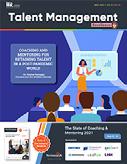


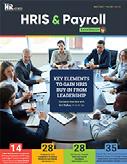
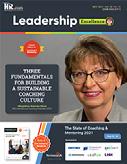
I regularly read and contribute to Leadership Excellence and Talent Management Excellence. I use many of the articles I read to augment my own presentations and I often share the articles with my clients. They are always quick, right on target for the latest issues in my field, and appreciated by my clients. If you want to stay up to date on the latest HR trends, choose a few of the different issues from the Excellence series of publications.


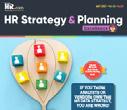
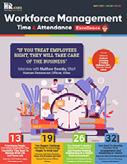
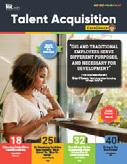
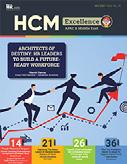
We’re eager to hear your feedback on our magazines. Let us know your thoughts at ePubEditors@hr.com
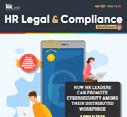
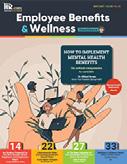
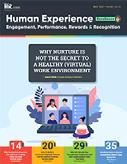 Dave Ulrich
Rensis Likert Professor, Ross School of Business, University of Michigan Partner, The RBL Group
Dave Ulrich
Rensis Likert Professor, Ross School of Business, University of Michigan Partner, The RBL Group
WHY EXCELLENCE PUBLICATIONS?
Julie Winkle Giulioni Author, Virtual /Live Keynote Presenter, Inc.’s Top 100 Leadership Speakers
Dr. Beverly Kaye CEO, BevKaye&Co.
Today’s Human Experience At Work Needs A Motivation Gut-Check
By Anne Jacoby, Spring Street Solutions
Recordlow unemployment. A surge in demand for top talent. Technology disrupting how work gets done. Our workplace has experienced radical changes in the last few years, and there’s no sign of it letting up.
I’m a long-time fan of Daniel Pink’s Drive. His clear articulation of motivators at work – Autonomy, Mastery, and Purpose – still rings true today. As we welcome in more non-human members of our workforce like RPA, ML, AI and ChatGPT (pick your acronym), it would be naïve not to think that many of our current work processes may soon be obsolete. Now is the optimal time to hit refresh on what motivates us to work in the first place. It’s time for a gut check.
Let’s Start with Autonomy
McKinsey’s 2022 Great Attrition, Great Attraction 2.0 global survey revealed the biggest reason for staying at a job is flexibility. But true autonomy at work is more than just a flexible work arrangement. It’s about
being trusted to figure out the best way to get your job done. It means empowering employees to decide where they can be most productive or creative—and giving them the power to act on it. True autonomy at work isn’t about shirking our responsibilities; it means turning up the accountability dial to eleven.
To assess your employees’ desire for autonomy, consider:
● Conducting a listening tour to gauge your workforce’s preferred level of independence
● Analyzing the effectiveness of synchronous and asynchronous work across teams
● Running experiments with varying levels of freedom and choice and comparing business results and employee satisfaction levels
When employees feel supported to chart their own course, they often go above and beyond typical expectations. This makes way for more creative thinking and innovative ideas.
Human Experience Excellence presented by HR.com March 2023 7 Submit Your Articles COVER ARTICLE
The state of the human experience in our workplace will continue to evolve
Next, Let’s Examine Mastery
Perhaps of no great surprise, McKinsey’s survey also disclosed that the biggest driver for quitting a previous job was a lack of career development and advancement. This thirst for mastery and growth shows up across generations and throughout the lifecycle of the employee experience. With so much change afoot in our workplaces, one consistent core competency is the human skill of learning. The ability to bring a growth mindset, stay curious, and even unlearn old patterns is a sought-after capability in today’s dynamic world of work.
To create paths to mastery in your Learning and Development strategy, think about:
● Adopting a “constrain and nudge” approach to skill building to avoid boiling the ocean
● Picking your top three workplace competencies and bringing them to life in more meaningful ways
● Enabling your employees to deepen their core skills in the flow of work while creating shared, social learning experiences
Providing learning opportunities for team members goes beyond generating a static curriculum. It extends to work projects, stretch assignments, and reflecting on lessons learned in the trenches of building the business. By reframing missteps as forums to glean new insights, you can shield your workforce from getting discouraged by inevitable setbacks. Employees can then recognize the path to mastery requires resilience and grit.
Finally, Today’s Workforce is Motivated by Purpose
Many employees choose to work in environments that better reflect their personal values. They’re seeking a community– not simply a paycheck. I’m frequently asked to help clients co-develop their organizational North Star to clearly define the shared purpose and activate it across the employee experience. The power of this exercise extends beyond the positive impact it has on the corporate brand; it creates a space for employees to reflect on their own personal “why” around work.
Human Experience Excellence presented by HR.com March 2023 8 Submit Your Articles Today’s Human Experience At Work Needs A Motivation Gut-Check
You might choose to invest`
● Defining your shared organizational purpose at work or the reason your company exists
● Exploring your employees’ personal connection to purpose through stories and moments that matter

● Holding the space for purpose-led conversations between teams, managers, and direct reports, to let the North Star shine its light
By gut-checking our motivations about work, we can discover new, creative ways to work more autonomously. We can learn, grow, and connect to our “why.” And if we’re not finding these experiences in our current work environment, chances are we have alternative choices.
The state of the human experience in our workplace will continue to evolve, especially with our dizzying pace of change. By tapping into our motivation and actively shaping a new way of working, these changes have great potential to lead to an employee experience that fulfills us.

Anne Jacoby is an accomplished public speaker, author, entrepreneur and CEO of Spring Street Solutions, dedicated to cultivating creativity at work. She offers practical tools for business leaders to build the culture they crave. By blending her background in the arts and business know-how, Anne addresses how cultivating creativity is essential in the new world of work. Through interactive workshops, leadership programs and culture strategy, Anne helps develop more connected, inclusive and innovative cultures to drive business results. Her techniques for igniting creativity and discipline unlock potential for high performance, stronger culture, and happier teams.
Would you like to comment?
Human Experience Excellence presented by HR.com March 2023 9 Submit Your Articles Today’s Human Experience At Work Needs A Motivation Gut-Check
13 Tactics Employers Are Using To Improve The Employee Experience
From conducting stay interviews to offering a yearly stipend, the list continues
Compiled By Brett Farmiloe, Terkel.io
From focusing on a solid onboarding plan to allowing side project time for your team, here are 13 answers to the question, “Can you share your most effective tactics that improve the employee experience at your organization?”
● Focus on Onboarding
● Break the Ice Between Teammates
● Share the Impact of the Work
● Incorporate Mindfulness into Company Culture
● Provide a Strong Sense of Purpose
● Conduct Stay Interviews Often
● Have a Tight Feedback Cycle
● Design a Peer Recognition or Reward System
● Engage the Team With Big-screen TV Dashboards
● Use Insight to Implement Changes
● Create Meaningful Moments for Connection With Others
● Offer a Yearly Stipend Towards Education
● Give All Employees Side Project Time
Human Experience Excellence presented by HR.com March 2023 10 Submit Your Articles
TOP PICK
Focus on Onboarding

Every employee experience starts with onboarding. The first weeks are crucial in shaping people’s attitudes toward your organization and future job satisfaction.
Because of the rise of remote work, integrating new hires into the company culture has become even more challenging. At LiveCareer, we use different methods as part of our extended onboarding tailored to the employees’ needs.
To facilitate interactions between newbies and current team members, we give our new employees a chance to socialize with other coworkers. One tool we use is our internal onboarding game. We encourage new employees to communicate with various team members to get their answers for the game.
Such an experience facilitates relationship building within teams, adds an element of fun to the onboarding, and helps to improve the employee experience from day one.
Break the Ice Between Teammates
The strength of our business is that everyone in all departments interacts with each other directly. So, we do our best to break the ice between team members, making collaboration feel more comfortable in the remote workspace.
Email introductions allow new hires to share their professional experience, as well as their hobbies, pets, and favorite foods, which provide great talking points when first starting a project together. And a Calendly link makes it easier for teammates to schedule a virtual face-to-face. We also spotlight a new or veteran team member in the “Get to Know Me” segment of our weekly Zoom meeting.
This gives us all the privilege of learning about each other’s personal lives beyond our roles in the company. People are more likely to collaborate better and reach out with questions or help when they feel more familiar with their co-workers. And fostering conversations that have absolutely nothing to do with the bottom line is vital to humanize the remote workspace.

Human Experience Excellence presented by HR.com March 2023 11 Submit Your Articles
Dorota Lysienia, Community Manager, LiveCareer
Shaunak Amin, CEO and Co-Founder, SwagMagic
13 Tactics Employers Are Using To Improve The Employee Experience
Share the Impact of Our Work
In the legal business, it is easy to get caught up in the technicalities of a case or get so busy handling several clients at a time that we fail to consider the impact we create.
At our firm, we know how important it is to let every employee know how every little thing they do contributes to the wins we register for our clients. The revelation of the difference they make to the entire process proves inspirational to an employee who wrongly thinks that their job is comparatively less important.


This employee no longer feels like just another cog in the wheel. Instead, they are now motivated to do even better because they know how their actions and innovative ideas add to the success of our clients.
Incorporate Mindfulness into Company Culture
Incorporating mindfulness into our company culture has helped to improve the overall employee experience. By promoting mindfulness practices such as meditation, deep breathing, and mindful movement, we’ve been able to help employees reduce their stress levels and reduce burnout.
Mark
We also encourage our employees to take breaks throughout the day to engage in mindfulness practices, which has helped to improve their ability to manage stress and maintain focus, leading to improved performance and job satisfaction.
Overall, building mindfulness into our company culture has helped create a more positive and fulfilling work experience for our employees.
Human Experience Excellence presented by HR.com March 2023 12 Submit Your Articles 13 Tactics Employers Are Using To Improve The Employee Experience
Riley Beam, Managing Attorney, Douglas R. Beam, P.A.
Pierce, CEO, Cloud Peak Law Group
Provide a Strong Sense of Purpose
Employees with a strong sense of purpose better understand how their work fits into the greater context of the goals of the organization and the impact of their contributions. And with this greater sense of purpose, employees are much more likely to enjoy their work, experience higher job satisfaction, and are less likely to burn out.
Organizations can improve their employee experience by fostering a culture of purpose, communicating their mission and values, and creating opportunities for employees to make a meaningful impact.
Your employees want to know they work for a company that cares about their impact on the world, and they will be much more motivated and happier if they are included in those goals.
Conduct Stay Interviews Often
Anthony Martin, Founder and CEO, Choice Mutual
 Allan Stolc, Founder, Bankly.dk
Allan Stolc, Founder, Bankly.dk

Engage with employees through stay interviews to get honest feedback about their overall stay in the company. Ask the hard questions, be ready to hear straightforward yet realistic answers, and show your genuine intention to address specific issues in the workplace.
You can improve the employee experience by being open about situations that may hinder them from carrying out their tasks. Conduct comprehensive stay interviews at least once every quarter. This may take a bit of effort compared to holding one stay interview annually, but this will be a perfect opportunity to make amends for your relationships with disengaged employees.
It will also allow you to focus on your people’s growth, attend to their needs, and ensure their satisfaction is your top priority.
Human Experience Excellence presented by HR.com March 2023 13 Submit Your Articles 13 Tactics Employers Are Using To Improve The Employee Experience
Sretenovic,
Have a Tight Feedback Cycle
Providing valuable feedback to your employees is standard practice, but how many companies actually take the time to implement their employees’ feedback?
The best thing you can do to improve employee experience is to have regular one-on-one meetings with your team, where you will ask for feedback on how they believe they can make the team or the company better and actually act on it.
Sending a monthly company newsletter that outlines exactly how you plan to implement employee feedback will show your team that your company values their opinions and is putting its money where its mouth is.
Lilian Chen, Co-Founder and Chief Operating Officer, Bar None Games


Design a Peer Recognition or Reward System
You can easily improve the employee experience at any organization by introducing a peer recognition and reward system. This system allows employees to recognize and reward each other for tasks or accomplishments that go beyond the expected job duties.
This system also helps to recognize individual and team efforts, as well as foster a sense of camaraderie among employees. I have found that this system has improved employees’ morale and encourages them to go above and beyond in their work. The key takeaway from this tactic is that employees feel valued and appreciated.
Human Experience Excellence presented by HR.com March 2023 14 Submit Your Articles 13 Tactics Employers Are Using To Improve The Employee Experience
Gordana
Co-Founder, Workello
Engage the Team With Big-screen TV Dashboards


In 2022, our company mounted big-screen TVs in all work areas and breakrooms. Our social media director was tapped to create a new, looping slideshow each month that highlights staff birthdays and anniversaries, production and sales data, health tips, our website traffic, incentive programs, employee achievements, company awards, and more.
Colorful graphics are used to increase interest. The information shared on these TVs improves communication among our workforce. This makes everyone feel like an integral part of the company. Workers communicate with each other better and more often, even if it’s just to wish a coworker happy birthday. We believe this makes everyone feel more like part of the team and subsequently increases productivity.
Human Experience Excellence presented by HR.com March 2023 15 Submit Your Articles 13 Tactics Employers Are Using To Improve The Employee Experience
Shelley Grieshop, Writer, Totally Promotional
Use Insight to Implement Changes


We are committed to improving the employee experience through initiatives aimed at employee engagement and feedback. One such tactic that we have implemented is a quarterly employee engagement survey.
Through this survey, we can collect valuable data on our employees’ overall satisfaction with their job, working environments, and other aspects of our organization. We have gained invaluable insights from these surveys, including the need for greater communication and collaboration between departments.
We have used these insights to inform our HR strategies and implement changes that can help drive employee engagement and personal growth.
Create Meaningful Moments for Connection With Others
I support mostly remote-first tech and media/entertainment organizations. These environments are also frequently siloed by department, and people don’t proactively interact and get to know their colleagues.
In 2022, I kicked off a few bite-sized learning initiatives to support development and lean into social learning to elevate the collective employee experience. These moments are opt-in and embed development into the experience. It’s open to all employees regardless of role or level, and people feel seen, heard, and valued.
We’ve had a monthly increase in opt-in and actual attendance at all events of +120%, due to word of mouth. We’ve seen an increase in engagement scores of 8%, which positively impacted learning and development scores of +11-15%, and (this is my favorite) people have added these activations to their professional development plans as a part of their growth goals.
Human Experience Excellence presented by HR.com March 2023 16 Submit Your Articles 13 Tactics Employers Are Using To Improve The Employee Experience
Elizabeth Boyd, Talent Development and Learning and Workplace Experience Consultant, TalentLab.Live
Tawanda Johnson, HR and DEI Consultant, Sporting Smiles
Offer a Yearly Stipend Towards Education
One of our biggest focuses at Checkr is targeted at our learning and development programs that help ensure that employees are up-to-date with the latest technological advancements, are constantly learning new things, and can improve their knowledge with a yearly stipend towards education.
By knowing that we are keen on their development and growth, employees are more satisfied, more efficient, and get better results, improving their employee experience and satisfaction.
Give All Employees Side Project Time



“Side-project time,” as popularized by Google, allows employees to spend a portion of their time on exciting, interesting, or novel side projects of their own creation. This fosters creativity, gives staff freedom, and might lead to commercially relevant innovations down the line.
Our personal experience of side-project time has been tremendously positive. First, many of us have developed additional skills while pursuing side projects, particularly our software developers. Second, we have launched several new projects that started as side projects, many of which have become part of our core offering. Last, we all feel significantly more empowered, as we know our organization trusts us enough to pursue our ideas.
Human Experience Excellence presented by HR.com March 2023 17 Submit Your Articles
Ben Schwencke, Business Psychologist, Test Partnership
13 Tactics Employers Are Using To Improve The Employee Experience
you like to comment?
Brett Farmiloe is the Founder and CHRO of Terkel.io
Would
Denise Hemke, Chief Product Officer, Checkr
How To Create A Culture Of Innovation
Boards can lead by example in encouraging a culture of innovation
By Fennemiek Gommer and Anne Mieke Eggenkamp, Caracta Business Innovation
Toadjust to a changing world, every company needs to create a culture of innovation. This becomes even more crucial when it’s time for business transformation. Successful transformations require not only the design of new possible futures but also accommodating new creative attitudes, behaviors and skills. Creating an innovation culture includes developing the ability to shift perspectives, make unusual connections, visualize what is not yet, and learn from experiments. Building this kind of culture starts with identifying your true purpose.
Organizational Purpose is Key to Business Success
The EY Beacon Institute partnered with Harvard Business Review Analytic Services to conduct a global survey across different sectors and geographies to investigate the business case for purpose. The survey defines organizational purpose as “an aspirational reason for being which inspires and provides a call to action for an organization and its partners and stakeholders and provides benefit to local and global society.” The report concludes that purpose is a powerful but underutilized asset. Their key findings are as follows:
● 89% of executives believed purpose matters as a driver for employee satisfaction, transformation ability, and customer loyalty. Only 46% indicated their company has a strong sense of purpose.
● Executives from companies that treat purpose as a core driver of strategy and decision-making reported a greater ability to drive successful innovation and transformational change. More than half (53%) of executives at companies with a strong sense of purpose said their organization is successful with innovation and transformation eforts, while less than one-fifth (19%) reported success at companies that have not thought about purpose.
This aligns with a benchmark study among leading innovators such as Pixar, Google and eBay that Harvard professor Linda Hill describes in her book Collective Genius. Her research question was how leaders can build an organization that is capable of innovating continually over time. The companies she studied do this by creating a community that is both willing and able to innovate. To be willing, the community must share a sense of purpose, values, and rules of engagement. To be able, companies must: identify opportunities and generate ideas through discourse and debate; experiment quickly, reflect and adjust; and make decisions that combine disparate and even opposing ideas. Identifying your true purpose is both the starting point for designing your new business direction and a prerequisite for creating an innovation culture.
Human Experience Excellence presented by HR.com March 2023 18 Submit Your Articles
How to Create a Culture of Innovation
Once you have identified your business’ shared values and culture, involving various stakeholders, teams, and employees to ensure a broad range of authentic perspectives, focus on making more time to explore new ideas.
Make creating the future an ongoing part of your business by regularly setting aside time for “what if?” sessions to stimulate a culture of innovation. This way you can either adapt your current business direction or introduce a new one when needed. Once you’ve envisioned what you want your business to be like in the future, create a roadmap that will guide you there instead of a detailed operational plan. A roadmap outlining the big shifts needed to transform your business enables you to adjust to the opportunities and threats that our fast-changing world provides. It also means the board needs to make sure their leaders are able to sense what’s going on in the world and pivot when necessary.
In an innovation journey to design the future of your business three phases can be identified:

● The ENGAGE phase is about connecting to the people inside and outside your company. People make the difference between an average result and a great one. For which customers do you want to create value? What are their unmet needs? How can other stakeholders help or hinder the transformation? Whom should we involve for their expertise, creative solutions, or buy-in?
● In the ENVISION phase, you use your imagination to answer the questions: What do we want our business to look like in the future? How can we bring our purpose to life in different ways? What big opportunities do we see?
● Finally, in the EXPLORE phase, you map the consequences of the possible future directions and identify which key business and leadership shifts are needed to turn the vision into a reality. You set up experiments to be able to stress-test and improve your ideas.
Human Experience Excellence presented by HR.com March 2023 19 Submit Your Articles
How To Create A Culture Of Innovation
Companies with an innovation culture strive to always be future-ready by regularly setting aside time to design new possible futures and to allow a part of their organization to experiment with new business ideas. This ‘explore’ part of the business is organized differently, comparable to a start-up. In general, it’s less hierarchical and functions more like a network organization, with more freedom to deviate from the corporate rules and more acceptance of failure.
Building Creativity at the Board Level
An essential part of creating an innovation culture is setting the right tone at the top, and building a board and leadership team that values creativity and “whole brain” thinking. A board set up for creating an innovation culture combines both “left-brain” analytical and operational focuses common to multinational corporations, executives, and management consultants with stereotypically “right brain” qualities, dominant within creative agencies, entrepreneurs, and designers.
Those leaning toward right-brain qualities can be considered to have an “exploit” leadership style, and those veering toward left-brain qualities are under an “explore” leadership bracket.

Boards can lead by example in encouraging a culture of innovation, balancing both “exploit” and “explore” approaches by following Ludo Van der Heyden’s five Cs of fair play. Bringing the five Cs to life in the boardroom might look like:
● Consistency: ensuring that all people are treated equally and have the same information*
● Clarity: being transparent about your intentions and putting the real issues on the table
● Communication: collecting insights from – and exchanging ideas with –your relevant stakeholders
● Changeability: being willing and able to change your opinion and direction when obtaining new insights
● Culture: having a shared commitment to the purpose and values of the company and the openness to evaluate and learn
The five Cs are the foundation for ensuring constructive dynamics and meaningful, value-adding dialogues in the boardroom. Similarly, these principles can help entrench a culture of innovation within an organization from the top down.
Creating a culture of innovation is key to helping any business pivot and adapt to the pace of today’s changing world. It is also the essential basis for any business to be able to design the desired future direction of their business. To build a flourishing innovation culture, businesses must ground it on a unique shared purpose and values. Then, it’s important to set time aside to explore different directions and ideas, embracing the flexible mindset of a start-up. Lastly, innovation should be led by those at the top, a board balanced in both “exploit”, operational goals and “explore” creative perspectives is the cornerstone to embedding a culture of innovation that lasts.
Fennemiek Gommer and Anne Mieke Eggenkamp together lead Caracta Business Innovation. Working as a duo they believe in the added value of integrating a strategy and leadership development approach to business innovation. They help leaders apply creativity and work with unconventional experts to design their future direction, brand positioning, and transformation journeys. Their new book, Boardroom Creativity is all about how boards can apply more creativity to design the desired future for their business.
Would you like to comment?

Human Experience Excellence presented by HR.com March 2023 20 Submit Your Articles How To Create A Culture Of Innovation
Navigating The Challenges Of Hybrid Workforce With High-Bred Leaders
Enhancing the employee experience
By Dr. Beverly Kaye, BevKaye&Co.
While managing the currently evolving hybrid workforce is not as complicated as building a Prius or as risky as crossing a polar bear with a grizzly, we already know it won’t be easy. Smoothly integrating a hybrid work model into the existing employee experience requires leaders who can deal with widely variable situations while treating all parties fairly.
Leaders must make sure remote employees’ tasks and projects are well coordinated with their counterparts back in the office. These leaders must:
● Make sure to go with the flow and motivate their employees to do the same
● Remain flexible while ensuring their employees’ flexibility
● Monitor their employees’ stress levels while controlling their own
These are all characteristics of what I call the “high-bred leader” – the leader who must be capable of influencing and improving employees’ feelings about their overall work experience. They are being
called upon to build and maintain a blended work environment where employees feel comfortable, healthy, and happy more often than not.
“High-bred” is a somewhat vague, old-fashioned term often used by aristocrats and those who believe they are better than others. But The Free Dictionary defines the term less arrogantly and more accurately as, “… qualified … educated… informed… enlightened” and uniquely “prepared to exercise authority within a larger group.” These are just a few of the words that describe today’s new breed of leader, but there are others. Here are just four:
Realistic: The dictionary defines “realistic” as having or showing a sensible and practical idea of what can be achieved or expected. A realistic leader accepts and understands the true facts of the situation before tackling it A realistic leader does not hope for the impossible. This leader maintains a balance of optimism and realism. Optimistic leaders are to be hoped for, but the best hybrid workforce leaders understand the actual obstacles and work hard to overcome them.
Human Experience Excellence presented by HR.com March 2023 21 Submit Your Articles
TOP PICK
Nimble: This word refers to the ability to stretch, bend and twist in whatever way is necessary. It is a critical requisite for high-bred leaders, who must manage the needs gap between remote and on-site workers, adjust behaviors and practices based on disparate employee workstyles, and deftly maneuver through “business as unusual.” The high-bred leader is emotionally and intellectually limber enough to bend without breaking, pivot away from unnecessary distractions and maintain flexibility necessary in today’s organizational climate.
Imaginative: High-bred leaders will face problems and issues they have no experience with. They must
be willing and able to imagine what is not immediately apparent and will occasionally need to “make it up.” Imagination will enable them to stretch their assumptions and opinions, resist believing everything they think and make room for possibilities that are not immediately apparent. Then, bounce back if things go wrong.
Open-minded: High-bred leaders can foster the patience necessary when it comes to listening and addressing the concerns of their hybrid employees. Their concerns are bound to be unique to a certain extent. Having an open mind enables a leader to listen and react appropriately to the particular needs of each employee. Leaders cannot meet all those requests but can enlist the employee in brainstorming workarounds that make the solution to the issue a joint endeavor.
No one expects management to guarantee an employee’s well-being, but in today’s hybrid work environment, where the employee experience more and more often determines whether a worker will stay or go, high-bred leaders must do all they can to exert a positive influence on how employees feel and what they encounter in their daily work.

Winston Churchill said, “Success consists of going from failure to failure without loss of enthusiasm.” Yes, even high-bred leaders will fail sometimes. But leaders who maintain enthusiasm in the face of failure have an advantage, because enthusiasm is contagious, and the hybrid workforce will “catch it.”
Dr. Beverly Kaye is recognized internationally as one of the most knowledgeable and practical professionals in the areas of career development, employee engagement and retention. Her contribution to the field of engagement and retention includes the Wall Street Journal bestseller, Love ‘Em or Lose ‘Em: Getting Good People to Stay, which is no-w in its 6th edition. Her recent books in the career development field include Up is Not the Only Way and Help Them Grow or Watch Them Go, which provided overwhelmed managers with a way to blend career conversations into their everyday routine.
Would you like to comment?

Human Experience Excellence presented by HR.com March 2023 22 Submit Your Articles
Navigating The Challenges Of Hybrid Workforce With High-Bred Leaders





Sponsored by: Build workplaces that maximize employee potential
State of Human Experience in the Workplace 2023 INTERACTIVE MARCH 2023 Special Research Supplement March 2023
The
INDEX
The State of Human Experience in the Workplace 2023
Exclusive Study By The HR Research Institute
Survey conducted by: Sponsored by:


ARTICLES

4 Keys to Tailoring Your Onboarding So Your Gen Z Teammates Feel Included
By Jim Barnett, Wisq
Make Sure Managers Matter
By Joe Hart, Dale Carnegie
Top 5 DEI Workplace Trends
By Katie Coleman, Circa
Outsourcing HR: What Are the Benefits?
 By Paychex
By Paychex

The HR Research Institute, powered by HR.com, the world’s largest social network for Human Resources professionals, is a key part of our mandate to inform and educate today’s HR professionals. Over the past three years, the HR Research Institute has produced more than 85 exclusive primary research and state of the industry reports, along with corresponding infographics in many cases, based on the surveys of thousands of HR professionals. Each research report highlights current HR trends, benchmarks, and industry best practices. HR Research Institute Reports and Infographics are available online, and always free, at www.hr.com/featuredresearch

25 RESEARCH
REPORT SUMMARY
30
34 38
42
The State of Human Experience in the Workplace 2023
Build workplaces that maximize employee potential
Sponsored by:


Current economic trends make employee experience complex to address. As we write this report, we are in uncertain times. As of December 2022, the U.S. unemployment rate continues to be a low 3.5%, and organizations continue to worry about retaining their best performers. However, many organizations in the technology sector have been undergoing massive layoffs, and business leaders worry that a recession could occur in the overall U.S. or even the global economy in 2023.

Even before this period of high employee turnover, however, many organizations had started focusing more on the experiences of employees as well as other organizational stakeholders.
Although employee engagement remains important, this broader focus on experience was viewed as a needed corrective. Where engagement is seen as the pathway to gaining more productivity from employees, experience is about helping employees bring their authentic selves to work and feel good about staying. So, where does that leave us today? That depends on the industry and specific employer.
Considering the importance of these trends, The HR Research Institute conducted an exclusive study entitled The State of Human Experience in the Workplace 2023 to understand the state of human experience in the workplace.

25
RESEARCH REPORT SUMMARY STATE OF THE INDUSTRY RESEARCH
Exclusive Study By The HR Research Institute
Key Findings
● Most organizations don’t rate themselves highly on employee experience.
● Most organizations measure the employee experience in some way, but there’s no consensus on the best way, and some primary methods are reactive rather than proactive.
● Fully 86% of organizations use technology to track, gauge and otherwise manage employee experience.
● Positive employee experience is driven by social connections and deterred by employee burnout.
● Most HR professionals have a positive feeling about the future of employees experiences and expect a rise in importance in the near future.
● The success of employee experience initiatives depends on adequate funding and commitment from immediate supervisors.
Most of Today’s Organizations Report Lackluster Employee Experience Scores
Respondents were asked to rate the overall employee experience (EX) in their organizations on a scale of 1 (terrible experience) to 10 (top-notch experience). Just 16% give it a high rating of 9 or 10, though another 28% give it a rating of 8. Over half of the organizations (56%) rate the average employee experience in their organization as just mediocre or worse (that is, 7 or below) on a 10-point scale, and nearly a third report that the average employee experience in their organizations is 6 or below.
Organizations are overwhelmingly
the customer and supplier/ vendor experience
Eighty-three percent of organizations say customers of their organization would rate their experience as good or excellent. Roughly the same percentage say this about their suppliers/vendors.

26
positive about
RESEARCH REPORT SUMMARY STATE OF THE INDUSTRY RESEARCH
Survey Question: How do you think these groups in your organization would rate their experiences?
Some Aspects of the Employee Experience Are Better Than Others
To get a better feel for the relative strength of these factors in today’s workplace, we asked HR professionals to rate the extent to which they agree with statements on employee sentiment.
Although half or more respondents agree or strongly agree with all listed statements, there was much greater agreement in some areas than in others. For example, fully 80% agree to some extent that employees in their organizations are comfortable “bringing their whole self to work.” However, even here, only 21% strongly agree with the statement, suggesting that many HR
professionals understand that there are significant exceptions and that they lack a deep understanding of the challenges facing certain groups of employees at work.
Measuring the Employee Experience Is Largely Done Through Retrospective and Arguably Dated Methodologies
We asked respondents to choose the tools, technologies, and/or methods that their organizations use to measure the experiences of their employees. Encouragingly, the majority of organizations (94%) measure employee experience in some way.
27 RESEARCH REPORT SUMMARY STATE OF THE INDUSTRY RESEARCH
Good Excellent Poor Below average Average 0 20 40 60 80 100 Suppliers/Vendors Customers 27% 58% 13% 36% 47% 13% 1% 3% 3% 1%
Survey Question: Which tools, technologies or methods does your organization use to measure the experiences of employees? (select all that apply)
Exit interviews
One-on-ones
Employee recognition programs
Annual surveys
Performance management system
Pulse surveys (including net promoter tools)
Employee communication tools (e.g., Slack)
Open feedback tools (such as online suggestion box always available to employees)
Anonymous two way conversations
Whistleblowing software for compliance
Passive analytics (i.e., data collected without involving data provider)
Focus groups
28 RESEARCH REPORT SUMMARY STATE OF THE INDUSTRY RESEARCH
0 10 20 30 40 50 60 70 80 65% 64% 57% 55% 49% 36% 35% 29% 25% 16% 15% 13%
Just over onethird use pulse surveys to measure employee experiences
Most Use Technologies to Affect Employee Experience, but There’s No Consensus on Which Ones to Leverage
When asked about the technologies they use to “track, gauge and otherwise manage or influence employee/human experience,” 86% say they use some kind of technology. Fifty-five percent of respondents use survey tools, and nearly the same percentage (54%) use performance management technologies. In addition, over two-fifths utilize employee feedback and communication tools (45%), L&D tools (44%) and onboarding systems (42%).
Social Connections, Meaningful Work and Fair Compensation Positively Influence Employee Experience, Whereas Burnout Negatively Affects It

To determine the top issues that positively influence employee experience, we asked respondents to choose the top five issues impacting employee experience. Feelings of camaraderie and friendship with coworkers (45%) top the list, followed closely by a sense of meaning and purpose (41%), work/life balance (40%),
opportunities to learn (39%), and ability to grow within the organization (39%).
Employee Burnout Most Negatively
When asked to choose the top five issues negatively impacting the experiences of employees, a majority of respondents chose employee burnout (55%), making it the most widely cited factor. Other HR Research Institute studies have also indicated that stress and burnout are among the foremost factors negatively affecting employee experience.
About three-fifths of respondents agree or strongly agree that employee experience will improve over the next year. However, 31% neither agree nor disagree, and 10% actively disagree.

Read the Research Report To learn more about human experience in the workplace, and for key takeaways and recommendations on The State of Human Experience in the Workplace 2023, check out the full report. The State of Human Experience in the Workplace 2023 Build workplaces that maximize employee potential FEBRUARY 2023
29 RESEARCH REPORT SUMMARY STATE OF THE INDUSTRY RESEARCH
4 Keys to Tailoring Your Onboarding So Your Gen Z Teammates Feel Included
Jim Barnett, Wisq
A version of this article originally appeared in Fast Company
This past summer, nearly 4 million college graduates — predominantly Gen Zers in their early 20s — will enter the workforce, and they may be unlike any entry-level workforce we’ve seen. These freshly minted grads are entering an unprecedented remote and hybrid work world with blurry lines that employers are still struggling to bring into focus.
At a time when young adults naturally seek connections and community, how will they bond with new coworkers, meet mentors, and fall in love with their jobs when their colleagues and managers are all behind a screen? How long will they stay with a company if they feel disconnected and isolated?

Therein lies the challenge for today’s workplace leaders, and we must acknowledge and embrace these unparalleled challenges as we onboard young teams.

STATE OF THE INDUSTRY RESEARCH 30
ARTICLE
Gen Z Embraces Hybrid, Remote Work
Gen Z workers (born between 1996 and 2012) will represent 27% of the global workforce by 2025, according to the World Economic Forum. These digital natives have clear desires for their future workplaces to provide social interaction and recognize their mental health.

This generation also desires the flexibility of hybrid work. Only 11% of 2,500 soon-to-be graduates surveyed want to work remote full-time, perhaps because of the networking and growth opportunities available to young people through in-person work. 60% prefer a hybrid schedule in the office two to three days per week. This means that teams need to provide a cohesive hybrid work experience with the right tools to inspire creativity and collaboration.
Gen Z prioritizes mental health, and they want the company they work for to prioritize it as well. According to LinkedIn research, 66% of Gen Z want a company culture that supports mental health and wellness. It makes sense that this generation also values work-life balance over career; 87% of Gen Z and millennial workers who began working remotely during the pandemic said worklife balance was one of their top work priorities, according to Citrix’s Born Digital report.
Rethink Onboarding. It’s a Connection and Retention Tool
I’ve spent my career helping people be happier together at work, and it’s at the core of helping companies build, retain, and engage highly effective teams. And I can attest that there’s never been a more challenging or important time to nurture workplace connection and joy.
Starting out on the first day is key. Your new hires’ first week is your chance to not only train them but also engage and excite them. To welcome the Gen Z workforce, a group that values belonging and work-life balance, put connection at the center of your onboarding process.
Do This to Provide a Fulfilling Onboarding Experience:
Put yourself in their shoes. Joining a team feels different when there’s no office to arrive at, no desk set up, and no hallway hellos. Gen Z ranks “sense of belonging” in their top three concerns, according to staffing company LaSalle Network, about entering the workforce. Think about how you can create an exciting online experience that leaves nothing to question. A face-to-face video chat, for example, is more engaging than a pre-recorded intro. Ensure that your hires understand who to reach out to with questions, and tailor a series of group and 1:1 meetups to get to know their teammates.
More is more. You don’t want to overwhelm new hires with onboarding tasks, but you also don’t want them feeling disconnected or lost. Provide a thorough weekly agenda that explains every step of the onboarding process. Schedule virtual coffee or lunch meetups to fill any gaps in the new hires’ schedule. Also, provide resources like blog posts or company emails that explain your company culture and employee development or enrichment resources, which can include trainings and employee resource groups. 77% of Gen Zers want to work for a brand that prioritizes diversity, equity, and inclusion, so you should provide materials that convey your vision and actions in this space.
STATE OF THE INDUSTRY RESEARCH 31 ARTICLE
Immediately connect new employees with teammates Expand the introductions beyond name and title; introduce people by their interests and attributes. At our company, we ask new hires to set up a profile on my company’s platform and then make an intro post. These connections are crucial to team morale and productivity — there’s a 56% increase in job performance when employees feel like they belong.
Introduce them to mentors. Peer mentorship offers instant insight into company culture and office know-how. Higher-level mentors can show new hires what growth looks like at your company — which is perfect for Gen Zers, who crave quick career progression
After Onboarding, Your Gen Z Colleagues Want Room To Socialize

Gen Z is entering the workforce at an unprecedented time, and companies must support their unique needs from Day One. It’s critical to make this younger generation feel like part of the team, and companies must meet them on their terms and offer ways for them to connect with their peers.

People are hardwired to be social and to want to belong. Teams that connect, share and build relationships are more engaged and higher performing. Give permission and create space for employees to socialize — on the clock
Investing in the success of your new Gen Z workers will help engage and retain this generation and set them up for future success.
Not sure if your new hires are feeling connected? Schedule frequent check-ins and survey your team about employee engagement, job satisfaction, sense of belonging, intent to stay, and more.
Magic happens when we can connect beyond our job titles as humans with lives, stories, interests, and aspirations.
32 ARTICLE STATE OF THE INDUSTRY RESEARCH
like to comment?
Jim Barnett is the CEO and Co-founder of Wisq
Would you

Reduce attrition and strengthen company culture Wisq users have half the likelihood of regrettable attrition. Improve connection and retain talent with Wisq. See Wisq in action wisq.com/get-demo
Make Sure Managers Matter
Joe Hart, Dale Carnegie
The results are in, and organizations have to face the truth—employee engagement is suffering. A 2022 Gallup survey recorded that employee engagement has continued to sink from 36% engaged in 2020 to only 32% engaged in 2022. Simultaneously, disengagement has risen from 14% to 18% actively disengaged.
All of this spells big trouble because engaged employees are an undervalued asset. Dale Carnegie research finds that employees who feel confident and valued within a company are three times more

likely to put in extra hours when needed, and more than 75% of engaged employees would recommend others do business with their employer. And, of course, engaged employees stick around longer.
Organizations can begin to raise engagement by focusing on three important organizational drivers: the relationship with an immediate supervisor, belief in senior leadership, and pride in working for the company. These three drivers work as dominos, and it’s the immediate manager who influences the other two.
STATE OF THE INDUSTRY RESEARCH 34 ARTICLE
Why Do Managers Matter Most?
Of the three organizational drivers, our research has found that only 26% of employees value their relationship with their immediate supervisor, 29% trust in senior management, and 33% believe in the purpose and direction of the company. Gallup research shows that younger employees feel less important at work and don’t feel they have anyone who helps them grow.
Managers influence all of these aspects by supporting employees in both their work and their personal well-being.
First, it’s important that immediate supervisors provide clarity on work and give employees the tools and training to perform their tasks. This doesn’t mean micromanaging. Instead, managers should empower employees to find the process that works best for them to get the desired results. This is also an opportunity to help connect employees’ work to the organization’s purpose, which can increase intrinsic motivation and engagement.
But it goes deeper.
Managers also set the tone for the workplace and look after employee well-being. They are the ones interacting with employees daily. They have the deepest understanding of who each employee is and what they need to do their best work. Managers encourage and supply learning opportunities and advocate for employees when it comes time for advancement. Managers are a reflection of senior leadership, and a good manager shows that the business cares about its employees.
In short, managers are critical. And it’s equally critical that businesses support their managers.
What Can Organizations Do for New Managers?
Every business needs a plan to support its new managers. And there are three areas of improvement that can help nurture leaders into the best versions of themselves: skills training, flexibility, and transparency.
Leaders and managers need the skills to properly do their jobs. Organizations can provide leadership training, assign mentors, or provide other support to show that they are investing in the growth and success of their managers in their new roles.
Just as employees should be given autonomy to perform their jobs, so too should managers be given the flexibility to manage their teams in the way that works best. Team members and the way they interact can change from group to group. One rigid style of leadership may not work for every team. Ask managers and teams for results while giving them space to figure out their own path there.
Senior leaders need to provide full transparency when assigning tasks, including connecting the work to the broader organizational purpose. Managers who believe in the importance of the work they are doing will be more motivated to complete their jobs well. Being transparent with managers also means those managers can translate instructions and expectations to their reports easily and clearly.
STATE OF THE INDUSTRY RESEARCH 35 ARTICLE
What Can New Managers Do for Themselves?
Change must start from within. It’s up to new managers to seek out knowledge and skills so they can fulfill their new roles. They must Take Command of their lives.
First, managers should build self-confidence. Self-confidence requires that we be self-aware (an important trait for any great leader). Confidence also helps us remain resilient in the face of adversity. A confident manager inspires their team, while an unsure manager can easily lose support and trust.

Managers also need to create a network for success. This means creating enduring relationships with others who will support you and help you grow. We build these relationships by ditching criticism, learning to deal with difficult people, and seeing things from others’ points of view.
Finally, managers need to set a vision for the future and live a well-intentioned life. A person with intention can maintain positive thinking as they work toward their goal; they react to negative situations calmly and rationally; they course correct when they see themselves veering from their intended path. Having a vision as a leader means you always have something to be working toward.
Managers mean everything when it comes to engaging employees. And businesses should support managers in their critical roles. Set up a support plan for your managers today, and watch your company flourish tomorrow.

SOURCES:
● https://www.gallup.com/workplace/468233/employeeengagement-needs-rebound-2023.aspx
● https://www.npr.org/2023/01/25/1150816271/ employee-engagement-gallup-survey-workers-hybridremote
● https://www.dalecarnegie.com/en/resources/engagingretaining-empowered-employees
● https://www.dalecarnegie.com/en/resources/enhancingemployee-engagement-the-role-of-the-immediatesupervisor
STATE OF THE INDUSTRY RESEARCH 36 ARTICLE
Joe Hart is the President & CEO, Dale Carnegie
Would you like to comment?
For over 100 years, we’ve helped companies of all sizes create a vibrant, sustainable workforce by fostering an environment that thrives on positive, productive relationships. In the months and years to come, we’ll continue to be your partner in creating inspiring, effective development opportunities for everyone from new hires to high performers, all the way to the top. •

•

Powerful People Skills
Inspiring Presenters
Leaders Who Build
More Sales & Amazing Service
Activated Organizations New Book Now Available! takecommand.com In-Person • Online • Blended dalecarnegie.com TAKE COMMAND
•
•
•
Top 5 DEI Workplace Trends
Katie Coleman, Circa
Much has changed within the workplace over the last several years as companies have become increasingly dispersed, more dependent on ever-changing technology, and are adapting to new, dynamic work environments. Because of this, we will continue to see more trends emerge throughout 2023, particularly in the diversity, equity, and inclusion (DEI) space.
Workplace “trends” has become somewhat of a buzzword, so how can we define it? The trends we will see in 2023 are shifts in the way of doing business that we should expect to see based around current changes to the workplace and company culture. Often we see trends appear in the form of identifiable patterns, such as datasets surrounding employee satisfaction, retention rates, etc.
Here are the top five workplace trends businesses should be aware of in 2023 and how they translate into building an effective DEI strategy.
1. Providing a top-of-the-line employee experience
The first question to consider is what makes for a truly great employee experience. This is the perfect opportunity for business owners and HR leaders to set aside time to hear what their employees have to
say, which can come in the form of surveys, focus groups, round-table discussions, and more.
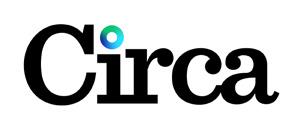
Some of the top areas employees across the country have reported as highly important for a current or prospective company include prioritizing appropriate work-life balance, support for growth and promotion within the company, and implementing workplace wellness programs for mental health support. In fact, 77% of workers believe a wellness program will have a significantly positive impact on company culture.
2. Enabling learning and development
Learning and development (L&D) programs are seeing drastic changes and adaptation requirements due to remote and hybrid work environments, which have a large impact on the processes of onboarding, training, and coaching. A few of the top L&D trends to expect in 2023 include
● A focus on upskilling and reskilling. This provides leaders an opportunity to teach their employees additional skills and expand their capabilities within the company, which is particularly important in a tight labor market. It’s important to ensure that training courses for upskilling and reskilling match employees’ learning needs and are equally accessible to everyone.
STATE OF THE INDUSTRY RESEARCH 38
ARTICLE
● Data-driven learning. Learning management systems (LMSs) can be a huge help in collecting and analyzing data about learning needs, competency levels, and can make content recommendations based on specified learning goals. The use of data in L&D creates actionable insights for moving the company upward and onward in a learner-centric way.
● On-demand learning. This type of learning is crucial for any business that functions in a hybrid or fully remote environment. Organizations need to ensure that their employees have access to learning and educational materials wherever and whenever they may need them.
3. Making Time for DEI
DEI is all about creating fairness and a sense of belonging for all employees, no matter their
background, demographics, etc. When employees feel a sense of belonging at work, it increases satisfaction, performance, and overall productivity. Consider these factors when addressing your DEI goals:

● Go beyond race and gender. Other forms of diversity include culture, age, disability, sexual identity, etc.
● Practice Fair Chance Hiring. Employers should consider an applicant and/or candidate’s qualifications and skill sets rather than any arrest or conviction history.
● Promote psychological safety. When employees feel comfortable sharing their ideas, and even making mistakes, they will show up and bring their authentic selves to the workplace.

STATE OF THE INDUSTRY RESEARCH 39 ARTICLE
Prioritizing DEI initiatives should not fall on one person — instead, organizations should ensure they are bringing in multiple people or groups to tackle these projects. It’s important to make it easy for employees to participate in DEI initiatives, whether it by on a council or as a volunteer to assist as needed. Circa’s whitepaper, How to Embed & Operationalize DEI in Your Organization, is a great guide to help take your DEI initiatives to the next level.

4. Providing support for employees in creative ways
Doing more with less requires creativity, but employers can show up for their team without drastically upping spending. Consider things such as:
● Making sure employees feel heard using feedback surveys and meaningful dialogue
● Encouraging employees to establish clear work-life boundaries (e.g., collaborating on more flexible work schedules, taking time off to recharge, and establishing mentoring or coaching programs)
The past few years have revealed that employees expect flexibility and personalization when, where, and how they work — and now, how they learn.
5. Focusing on Employee Retention

Especially in the wake of The Great Resignation of 2021 and the “quiet quitting” movement, organizations should be placing a strong emphasis on supporting current employees. Lattice’s people strategy report found that 84% of HR teams are investing more in employee retention than they have previously, and 61% are prioritizing it over talent acquisition.
A wave of recent layoffs has caused distress and lower confidence in existing employees and can result in disengagement and productivity loss. It’s critical to continue to remind employees how much they matter, how much value they bring to the company, and that they are being prioritized all throughout the employee lifecycle.
As we continue through 2023 and beyond, these trends will remain paramount. At Circa, we help organizations build a strong company culture, prioritize DEI, and accelerate their success. Learn how we can help today!

STATE OF THE INDUSTRY RESEARCH 40 ARTICLE
Katie Coleman is the Product Marketing Manager at Circa
Would you like to comment?

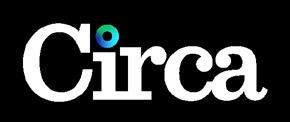
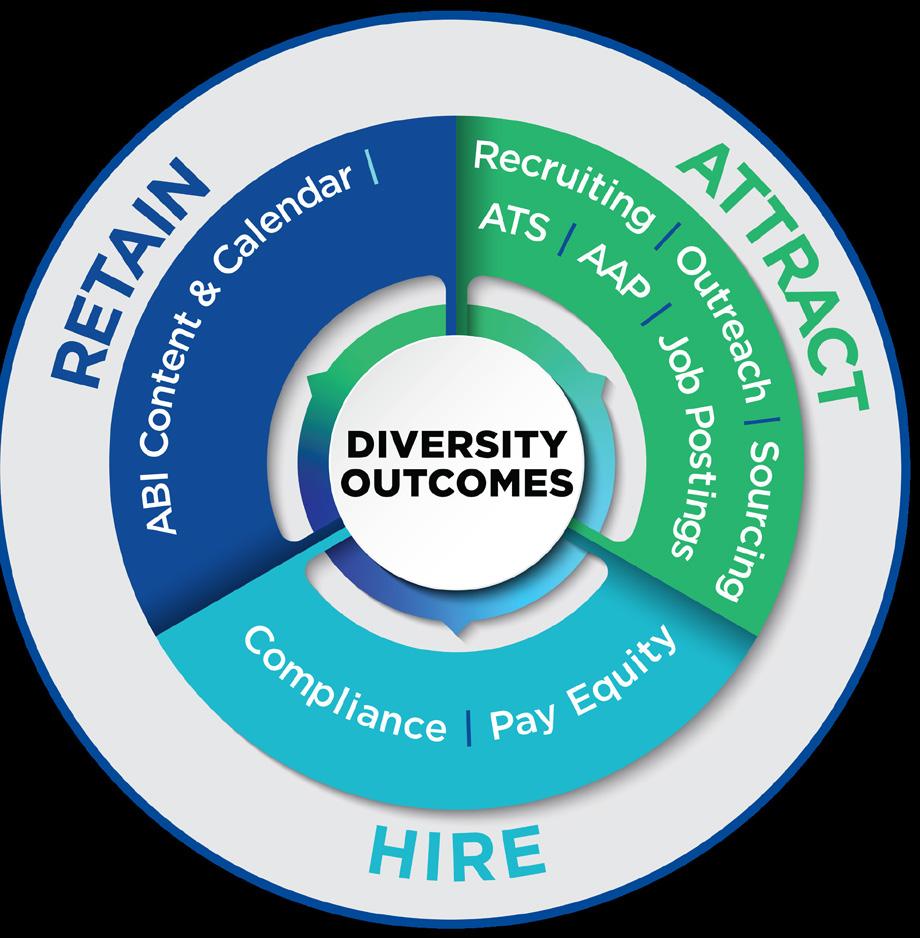
• Fewer mistakes
• Increased productivity
• Better analytics and reporting
• Improved regulatory compliance
• Reduced costs It’s
paychex.com/human-resources

It’s Time for a Change
time to outsource your HR administration.
Outsourcing HR: What Are the Benefits?
Small- and mid-sized businesses with limited personnel often find themselves overwhelmed by HR demands. If you feel your company is stretched thin managing critical areas of business, consider getting help. Many HR outsourcing services are specifically designed to streamline business functions, reduce expenses, and help companies meet their operational goals.
What Is HR Outsourcing?
Generally speaking, HR outsourcing involves the use of an experienced third-party provider to assist a business with specific HR functions. These functions may include solutions designed to help your business:
• Attract and develop talent
• Maintain legislative and regulatory compliance
• Administer benefits and payroll
In many cases, a relationship with the third-party provider can include access to a scalable HR technology platform, as well as guidance and support from a knowledgeable HR professional.

By shifting your team’s focus from administrative tasks to strategic efforts tied to the company’s mission, your team can make more comprehensive and lasting contributions with the help of HR outsourcing services.
Why Do Small Businesses Outsource HR?
With ever-mounting challenges and today’s economy, small businesses should consider all they can gain if they choose to outsource HR. According to a recent survey,
the number one benefit for leaders who outsourced HR administration was having fewer mistakes, cited by 51% of respondents. Other benefits included increased productivity (41%), better analytics and reporting (35%), improved regulatory compliance (35%), and reduced costs (34%).1
There are numerous benefits to outsourcing HR, including:
• The Ability to Focus on Business Productivity. More than two in five leaders shared that they outsource to increase productivity.1 Instead of handling routine administrative tasks, employers and their HR teams can focus on more strategic business functions that offer greater potential rates of return.
• Access to an Enterprise-Class Solution. Small businesses may be able to enjoy similar benefits that are on offer from larger employers when they work with a Professional Employer Organization (PEO), which can help them save on costs and compete more effectively for great talent. In addition, more than one-third of the leaders said they receive better analytics and reporting from outsourcing HR.1
Paychex
Top 5 Benefits of Outsourcing HR

1. Fewer mistakes
2. Increased productivity
3. Better analytics and reporting
4. Improved regulatory compliance
5. Reduced costs
• Help With Compliance. Failure to comply with laws and regulations can lead to serious financial consequences. Outsourcing HR functions to a trusted provider may help business owners understand and comply with these laws and regulations. In fact, 35% of the leaders said they improved their ability to stay in regulatory compliance by outsourcing HR administration tasks and duties.1
• More Effective Recruitment Efforts. According to the 2022 Paychex Pulse of HR Survey, “hiring, onboarding, and retention were identified by half of the respondents as the least effective HR activities in their organizations.” Outsourcing recruitment efforts to third-party providers offers a practical and cost-efficient method of improving a business’s recruitment strategies.
• Reduced Costs. HR administration can cost a business about $284,000 annually for a company with five to 500 employees, which can jump to over $10 million for larger employers.1 HR outsourcing, and PEOs in particular, could help small businesses with tight budgets. 2
• Free Up Time and Resources. HR outsourcing may help businesses lower health costs, reduce HR expenses, process fewer workers’ compensation claims, reduce turnover, and help generate higher revenue growth. Almost seven in 10 leaders reported spending one whole week a month on HR-related tasks. So, outsourcing to a third-party provider could significantly free up time and resources.1
• Gain Access to Expert Guidance. Today’s leading HR outsourcing providers also offer dedicated guidance from an HR professional. They can educate and guide you through the turbulent waters of laws, regulations, and employee-related matters.
All of these benefits can be achieved without the expense of additional staff while retaining the experience and expertise needed for a business to succeed. HR outsourcing also enables companies with minimal resources to use cutting-edge technology that could otherwise be too costly.
What HR Functions Can Be Outsourced?
An HR outsourcing provider can work with you and your team to provide support throughout the employment life cycle. Depending on the services you’re looking for, an HR outsourcing provider may offer support in the following areas:
• HR administration
• Payroll processing
• Employee benefits
• Recruiting and hiring
• HR compliance
• Employee performance management
• Workplace safety and risk management
Paychex
What Does HR Administration Cost?
$233,896
is the average cost to a business with 5 to 500 employees
When Should You Consider Outsourcing HR?
While leveraging outsourced HR services at any point can be beneficial, how do you know when it’s time to get HR support for your small business? Here are some tell-tale signs:
• Your HR Team’s Entire Focus Is Administrative. When HR staff spends most of their time on data input or forms processing, this may signal it’s time to look at outsourcing or upgrading to more robust HR systems.
• Employees Lack Access to Self Service. HR managers no longer need to conduct every aspect of benefits enrollment, updating employee information, retirement plan information, or employee training. Leading HR technologies can provide employees with self-service portals that help them complete many basic tasks, such as updating their mailing addresses or adjusting retirement plan contribution amounts.
• Your HR System Doesn’t Support Mobility. With many businesses now employing remote workforces, mobility for essential HR services such as employee time and attendance reporting and reporting for new hires is critical. Cloudbased solutions that support off-site access to the company are becoming the norm. For example, your HR technology may need an update if your employees can’t complete essential functions from their smartphones or tablets.
• HR Is Becoming a Cost Center. Ideally, your HR team should function as a critical strategic asset, not a liability. It may be time to ask yourself how external expertise or better technology can help.
$10.7 Million
is the average cost to a business with 250 to 500 employees
• You Struggle to Meet Statutory and Regulatory Requirements. Your HR team needs to understand current federal, state, and local laws and regulations that may affect your business. Companies lacking inhouse support in this area may want to outsource.
Find HR Support That Keeps Pace with Your Business
Running a business today means managing mounting labor and employment laws and regulations and demands from staff and team members who are stretched thin. That’s why HR outsourcing may be a great investment for your business this year. Help your business meet larger and more pressing long-term goals with access to scalable, costeffective HR services and support.
Learn more at paychex.com/human-resources
Darby Starnes is a Senior Manager of HR Services at Paychex. With over 25 years of experience, she is a passionate HR leader dedicated to helping others thrive.
1 2023 Priorities for Business Leaders, Paychex

This national survey was conducted with 450 business and HR leaders who employed from five to 500 employees from a broad cross-section of industries. From August 23 to September 1, 2022, the online interviews were conducted by Bredin, an independent market research company located in Boston, MA.
For companies with 250 to 500 employees Professional employer organization (PEO) services provided by Paychex Business Solutions, LLC (Florida employee leasing license GL7), Oasis Outsourcing, LLC (Florida employee leasing license GL42), and their affiliates, which are licensed or registered to provide PEO services where required by law.
2
Paychex
2023
Priorities for Business Leaders, Paychex

The State of Human Experience in the Workplace 2023 Human Experience Excellence • March 2023 For more information: 1.877.472.6648 sales@hr.com www.HR.com/epubs The HR Research Institute tracks human resources trends and best practices. Learn more at hr.com/featuredresearch Special Research Supplement
5 Reasons American Industry Needs ‘Active Listening’ Now More Than Ever
Top strategies to address the issue
By Merilee Kern, The Luxe List
Employeeburnout is one of the greatest challenges facing the U.S. economy to the tune of $300 billion each year, according to the American Institute of Stress. Its studies show that a near majority, fully 83%, of U.S. workers suffer from work-related stress, with over half (60%) of worker absences directly related to that stress. Not only is this a significant drain on resources that drives avoidable opportunity loss, it’s also a major contributor to both mental and physical health problems of valuable employees. Today’s employers need not knowingly or unconsciously undermine their own productivity and profitability. While any number of interventions can address and resolve the employee burnout epidemic, one solution is within earshot...literally: active listening.
Today’s modern management must take a top-down approach to support staffers, and not just hear what is being said but rather actively listen to it. For one, a Harvard Business Review study found that active listening is a key factor in improving leadership effectiveness, which, in turn, improves employee productivity, engagement and retention. Conversely, failing to do so presents a mission critical missed opportunity to address, and resolve, root causes of workforce stress and burnout. With employee burnout
so widespread, aptly addressing the issue can seem daunting for managers. However, the overwhelm of the issue can apparently be mitigated with a clarified understanding of common challenges that cause, and exacerbate, employee burnout. According to Adi Segal, CEO of Hapi.com, below are five red flags that can readily be identified and resolved through active listening. These are:
● Social Isolation: When employees feel isolated, their emotional state is compromised and they are more likely to experience anxiety, stress and burnout–factors that can erode and impair a company’s growth. The work-from-home culture has only exacerbated the issue. In fact, Airbnb’s CEO warned that “the most dangerous part of remote work isn’t lost productivity—it’s loneliness.” Active listening can help leaders identify employees who are struggling with this issue and take concerted steps to help them feel more connected to a manager and the team at large. Knowing that you “belong,” feeling that you are an important “part of something” and understanding that your contributions are valued can produce a powerful and positive mindset.
Human Experience Excellence presented by HR.com March 2023 47 Submit Your Articles
● Relationship Issues: Whether with respect to friends, colleagues, family or a significant other, relationship problems can cause significant pain, trauma and strain that promotes burnout. By actively listening to employees, leaders can identify these kinds of issues and take proactive measures to address them before they become major problems—for the worker, department and the company overall.
● Mentorship Deficits: Mentoring is an essential part of career development, but it can be challenging to navigate for both mentors and mentees. Many companies today are stretched thin and workdays are overwhelmed with tasks and to-do’s that make “free time” elusive if not seemingly impossible. Even so, it’s imperative for leaders to engage in active listening moments to help identify these guidance gaps and provide the necessary support, direction, assessment and praise to keep staffers on the right track.
● Socioeconomic & Financial Strife: Often, an employee pool represents a variety of socioeconomic factors and income levels. No matter one’s real or self-perceived stature or actual salary, everyone is at risk of struggling culturally and economically. Active listening can be a profound form of activism, with one report underscoring the extent to which active listening can offer much-needed support to help people deal with intense and distressing emotions in relation to these particular issues that fundamentally impact nearly every aspect of our work, home and social lives.
● Sub-Par Problem-Solving: It would be an understatement to say that problem-solving is a critical capability to uphold in the workplace. In fact, problem-solving skills were cited as the most important soft skill of 2022 with fully 86% of employers reportedly seeking this attribute on student resumes, according to the National Association of Colleges and Employers Job Outlook 2022 survey. Given this vital skill is hampered by communication breakdowns, active listening can help leaders identify these shortfalls, and bridge those gaps by providing the necessary understanding, explanation,
support and guidance to ensure everyone is on the same page.
According to Segal, “Even the most significant issues individuals, families and organizations’ face can be resolved with active listening, which needs to be more deeply embedded into our society—especially as most facets of our professional and personal lives move at lightning speed. Relative to corporate culture, better listening training is a quick and tactical way to demonstratively and quantifiably improve company culture, increase staff retention and boost the bottom line.”
Immediately Accessible Solutions
Addressing employee burnout and related productivity pitfalls need not be rocket science, according to Segal, there are numerous tactical strategies to start addressing the issue right now. These include:
● Practice Makes Perfect: As with any skill, listening ability is correlated with frequency of use. Like working a muscle, it will get stronger over time. Similarly, leaders should regularly schedule and conduct sessions with their employees to actually practice “the art of listening” rather than just “hearing what someone said.” This in order to fully comprehend the content, meaning and implications of that discourse. People must embrace the notion that listening is not just a concept, but rather something that requires intention and action.
● Train Your Team: There are numerous emotional intelligence and active listening courses leaders can provide individuals or their entire team. Just as the state mandates harassment training, business executives should make listening certification an important part of their own, and their team’s, professional development. Go a step further and make it a prerequisite or requirement for the job. If and when needed, expert trainers can be engaged to run active listening exercises, either in-person or virtually. Such professional resources can help expedite the key learning needed to put this skill into meaningful practice and start positively impacting people and the business bottom line.
Human Experience Excellence presented by HR.com March 2023 48 Submit Your Articles 5 Reasons American Industry Needs ‘Active Listening’ Now More Than Ever
● Recommend Resources: Analysis by NSC and NORC at University of Chicago reveals organizations that support mental health see a return of $4 for every dollar invested. They’ve built a Mental Health Cost Calculator that can demonstrate and quantify the financial impact on your own company. Also notable is, research making abundantly clear that talking to strangers can supercharge happiness. With the advent of Certified Listening as a Service (CLaaS), managers can promote mental health apps and resources that increase access to care and human connectivity with 24/7/365 availability, lower the bar to entry, and simply provide a safe space for team members (from the C-suite to the front line) to vent, relieve
stress, get advice, bounce ideas or just have company when feeling lonely or isolated. Such access anywhere, any time mHealth platforms can be a boon for employee retention, recruitment and organizational transitions.

“Many psychologists even admit that, often, people dealing with work and life issues don’t need therapy, but rather they just need someone to talk to,” Segal says. “Someone who will truly listen and provide the space for support, validation and exploration.”
Organizationally, leaders need to establish and build upon a culture of engagement, collaboration and trust. The kind that can only be compelled through true active listening so that employees feel heard, valued and supported in a way that impedes burnout. In turn, business and industry will realize an array of benefits, from increased productivity and higher staff retention rates to lower absenteeism and presenteeism exemplified by the ‘quiet quitting’ trend.
Employee angst, stress and burnout are significant business problems, and one highly viable—and relatively immediate—solution lies in the simple yet impactful act of active listening. By committing to this learned and nuanced skill, leaders can readily address the root causes of these issues and ultimately facilitate a potent culture of caring. Executives will quickly see the ripple effects as these improvements drive employee satisfaction and revenue growth.
HealthTech evangelist Merilee Kern, MBA is an internationally-regarded brand strategist and analyst who reports on noteworthy industry change makers, movers, shakers and innovators across all B2B and B2C categories. This includes field experts and thought leaders, brands, products, services, destinations and events. As a former fitness champion twice over, wellness industry veteran and health advocate, she’s also the author of the award-winning, illustrated fictional children’s book, “Making Healthy Choices – A Story to Inspire Fit, Weight-Wise Kids.” A prolific industry trends voice of authority and tastemaker, Merilee keeps her finger on the pulse of the marketplace in search of new and innovative must-haves and exemplary experiences at all price points, from the affordable to the extreme—also delving into the minds behind the brands. Merilee is also Host of the “Savvy Ventures” business TV show that airs nationally on FOX Business TV and Bloomberg TV and the “Savvy Living” lifestyle TV show that airs in New York, Los Angeles, San Francisco, Miami, Atlanta and other major markets on CBS, FOX and other top networks.
Would you like to comment?

Human Experience Excellence presented by HR.com March 2023 49 Submit Your Articles
5 Reasons American Industry Needs ‘Active Listening’ Now More Than Ever
A Few Hard Truths About Employee Engagement Surveys
Pitfalls to avoid and strategies to keep engagement high
By Yoram Solomon, Innovation Culture Institute™ LLC.
Employee engagement is essential to companies. It affects the company’s culture and performance. But it has also declined in the past several years. Because of that, many companies conduct employee engagement surveys. However, before you set off to conduct an employee engagement survey, there are a few things you should know and consider, because you may end up not really hearing what you need to hear, but rather only what you want to hear, and because you might do more harm than good with those surveys. This article will explain those, with examples and research data, and at the end, you’ll see what you should do to keep employee engagement high. Because, after all, that’s your goal. Right? And yes, it has everything to do with trust
Is Employee Engagement Important?
In 2020, Gallup conducted a meta-analysis of 456 studies covering 276 organizations in 54 industries and 96 countries, representing 2,708,538 employees. They found that employee engagement has a very significant impact on employees, culture, and company performance. A few key findings indicated that if employee engagement was at the top quartile (compared to the bottom one), turnover was 18-43% lower, absenteeism was 81% lower, and well-being
was 66% higher. Furthermore, those companies experienced 10% higher customer loyalty, 23% higher profitability, 18% higher productivity, and significantly fewer safety incidents and quality problems. Employee engagement is an important contributor to company success.
Unfortunately, another 2023 Gallup survey shows that after a decade of increase in employee engagement, the last two years showed a decline. Active engagement declined from 36% to 32%, while active disengagement increased from 13% to 18%.
Given the strong link between employee engagement and company performance, it is not surprising that many companies conduct employee engagement surveys regularly or not-so-regularly. But that raises the following question.
Are Employee Engagement Surveys Reliable?
The American Educational Research Association (AERA) conducted a 2017 study of 454 participants. They found that 75% are more inclined to complete a survey truthfully if they are assured of the anonymity of the responses. Only 18.9% didn’t mind anonymity
Human Experience Excellence presented by HR.com March 2023 50 Submit Your Articles
TOP PICK
at all. In a small LinkedIn Poll I conducted, out of 29 responses, 45% believed that their responses to an employee engagement survey could be tracked to them, and 34% were not sure. Only 21% were confident that the response could not be used to identify them.
There could be several reasons why responses could be used to identify the respondent:
● Because the survey was intentionally built that way
● Because of very detailed demographic and other information
● Because of a mistake or data breach
The perception that survey results are not anonymous could also be fueled by the “you have not filled out the survey yet” message, even if that message is automatically sent by the survey tool without the researchers or decision-makers knowing. But the perception is still there.
Undoubtedly, some people are not worried about anonymity and would provide the same responses to the survey as they would in person. But it seems that those are the exception rather than the rule. Most employees care about the anonymity of their responses, and unfortunately, most people also don’t believe the surveys are anonymous.
Those employees worry about retaliation from their managers if their responses to the survey are not what their managers want to hear. As a result, they will either refrain from responding to the survey or, if forced, respond with what they believe their managers want to hear rather than with what they need to hear.
Trust, therefore, plays a major role in getting good responses to the employee engagement survey. Most employees must trust that the survey is anonymous and that their management would not retaliate against them if they responded truthfully. In one of my surveys, I found that where trust is high, people are 240% more willing to be vulnerable and 106% more willing to provide genuine feedback.
The result is counter-intuitive: the less trust the employees have in the company, the more positive the results are (because employees would respond with what they believe the company wants to hear). Of course, at some point, the level of trust is high enough not only to cause employees to report an accurate engagement level, but the actual engagement is truly higher because of the increase in trust. Add to that the fact that people are more inclined to give negative feedback if they had a bad experience than to provide positive feedback if they had a positive experience, and the reported engagement level will even then be lower than the actual engagement level.
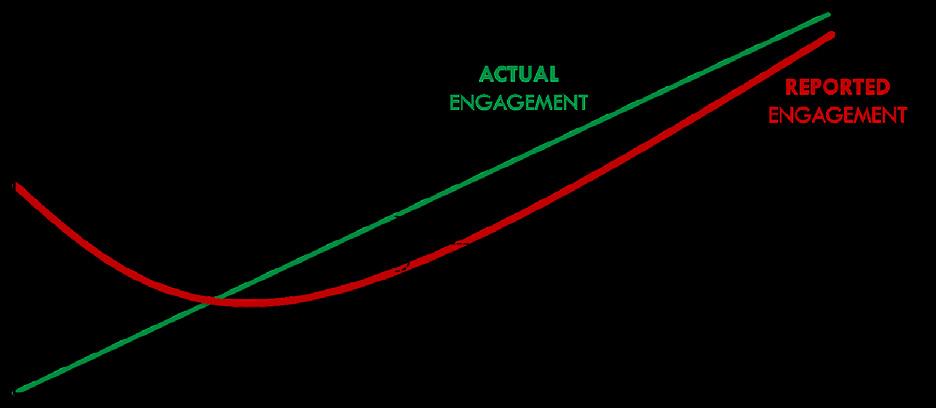
Human Experience Excellence presented by HR.com March 2023 51 Submit Your Articles
A Few Hard Truths About Employee Engagement Surveys
Are You Asking the Right Questions?
Another possible source for survey bias could be the questions themselves. An excellent illustration of that comes from the British TV comedy “Yes, Prime Minister.” In one of the episodes, they demonstrate how a poll could provide opposite results depending on the questions themselves. The bias doesn’t have to be intentional, but it could still exist.
A further potential bias comes from the depth of the survey. Interview-based qualitative research tends to be more exploratory (“peeling the onion”) but not feasible in large companies. As a result, conducting a large-sample study would typically require a survey-based, multiple-option question quantitative poll, which would provide less depth.
The Dangers of Statistics
The analysis part of the survey process could introduce problems as well. A sample could mask problems in one area of the company (if that area was not clearly identified in the demographic section of the survey). Imagine that one group (or level, or functional area) in the company would respond to a question with an average of 4.5 on a 5-point scale, while another group would respond with an average of 1.5. The overall average would be 3, masking a problem in one company area and the best practices that could be learned from another.
The sample itself can introduce additional bias. Engaged employees are more likely to respond to the survey than disengaged employees. First, because they are more engaged, and second because they are less worried about retaliation due to their responses. A great illustration of the sampling problem was given in 1948 when a presidential election poll was conducted and predicted that Dewey would defeat Truman. The reason you won’t find Dewey in the list of U.S. Presidents is that the survey sample itself caused a bias, and this became a case study in survey sampling.
You’ve Done the Employee Engagement Survey. Now What?

Once you have started to conduct an employee engagement survey, it is as if you pulled the pin out of a hand grenade. The employees will now be waiting for the results and, more importantly, what you will do about them. How you deal with the survey and the results could cause more harm than good for the following reasons:
● The results could be skewed due to any of the reasons listed above. Regardless, when the employees feel that the survey result are biased, they will not trust the survey or your actions.
● Your misinterpretation or misrepresentation of the results. I once observed a Chief Human Resources Officer present the survey results to employees, saying, “we did great!” First, the results should not be graded. It’s not a competition. It’s a temperature check. Second, the results were not great. When I asked, “why did you say it was great?” the answer was, “I expected the results to be so bad that the fact they were industry average exceeded my wildest expectations.” Misinterpreting or misrepresenting the results would cause the employees to distrust the survey or the resulting management actions. Furthermore, if the results are presented as “great,” employees will not feel the need to do something about them. After all, if it ain’t broke, don’t fix it!
Human Experience Excellence presented by HR.com March 2023 52 Submit Your Articles
A Few Hard Truths About Employee Engagement Surveys
● It takes too long to get the results, or the results are not shared with all employees. Either the timeline was not shared with the employees (how long will the survey be open? How long will it take to analyze the results? When will they be shared with the employees?), or it just takes longer than it was planned, employees will assume you are not doing anything about it.
● You don’t follow up the survey results with action. Often, the plan includes only conducting the survey, but once the results are in, the issue falls to the sidelines. Either there is no budget to deploy a program to improve engagement, or management doesn’t think the problem is serious enough (which would happen when employees tell management what they think management wants to hear rather than what reality is or when the CHRO reports the results as “great” to show they are doing their job well). The employees will now feel that they wasted their time and that the company did the survey only “for show” without any plans to do anything about it.
So, What Should You Do?
The first question you must ask yourself is, why are you planning to conduct an employee engagement survey? Is it because you don’t know how engaged the employees are, or because you want to improve employee engagement and are conducting the survey to establish a baseline, after which you are committed to making an effort and improving employee engagement?
The second question you must ask yourself is, do you really not know the level of employee engagement in your company? What would you do if your gut tells you that the engagement level is high, while the survey shows the opposite, or if your gut tells you the engagement level is low, while the survey indicates it is high? Which would you trust, your gut or the survey results?
The bottom line is that for employee engagement, you must always keep your ear to the ground and not bury your head in the sand. Conducting an employee engagement survey once every three years (or even every year) is not enough.

When it’s time to take action, make the employees part of the solution and not part of the problem. Remind the employees that culture starts with them and not their management. Present the findings, and ask employees for ideas on what would help increase their engagement.
This is the time to let you in on a secret. Research shows that when the level of trust in the company is in the top quartile, employee engagement is 76% higher than when trust is in the bottom quartile. Trust is the foundation for employee engagement, not only for the reasons listed in this article. In the 1992 movie Glengarry Glen Ross, actor Alec Baldwin plays an executive who speaks to the sales team and presents the acronym ABC: Always Be Closing. I would challenge you with a different acronym: ABBT: Always Be Building Trust. Building trust is easier than rebuilding trust once you lost it. If you keep your ear to the ground to gauge the level of engagement and trust, and constantly take action to build trust, you will never have to conduct an employee engagement survey.
But if you decide to conduct such a survey, first be aware that the results could be biased for the above mentioned reasons. Second, share the timeline for completing the survey and sharing the results, and stick to it. Third, get the employees involved in finding solutions and not only identifying the problems. Finally, conduct the survey only when you plan to follow up with action. Don’t do it just to be able to say you did something about it. You could do more harm than good.
Would you like to comment?
Human Experience Excellence presented by HR.com March 2023 53 Submit Your Articles
Yoram Solomon, Ph.D., MBA, LLB, is the author of The Book of Trust®, host of The Trust Show podcast, founder of the Innovation Culture Institute™ LLC, and facilitator of the Trust Habits™ workshop. He is a regular speaker at SHRM events.
A Few Hard Truths About Employee Engagement Surveys
HRCI® & SHRM® CERTIFICATION PREP COURSES
GROUP RATES AVAILABLE
For HR Professionals
Show that management values the importance of the HR function, and has a commitment to development and improvement of HR staff.
Ensure that each person in your HR department has a standard and consistent understanding of policies, procedures, and regulations.
Place your HR team in a certification program as a rewarding team building achievement.
For Your Organization
Certified HR professionals help companies avoid risk by understanding compliance, laws, and regulations to properly manage your workforce.
HR Professionals lead employee engagement and development programs saving the company money through lower turnover and greater productivity and engagement.
A skilled HR professional can track important KPIs for the organization to make a major impact on strategic decisions and objectives, including: succession planning, staffing, and forecasting.
HR.com/prepcourse CALL TODAY TO FIND OUT MORE 1.877.472.6648 ext. 3 | sales@hr.com
Why Certification is the Best Choice:
1 Less expensive than a masters or PhD program, and very manageable to prepare with flexible study options.
2. Recertification - ensures HR professionals continue to be up to speed on the latest legislation and best practices
3. Recognized, Industry benchmark, held by 500,000+ HR Professionals
Group Rate Options
We offer group rates for teams of 5+ or more for our regularly scheduled PHR/SPHR/ SHRM or aPHR courses.
For groups of 12+, we can design a more customized experience that meets your organization’s needs. You can have scheduling flexibility in terms of the days, times, and overall length of the course.
Groups rates for HRCI exams are also available as an add-on.
All group purchases come with 1 year of HR Prime membership for each attendee to gain the tools and updates needed to stay informed and compliant.

CALL TODAY TO FIND OUT MORE 1.877.472.6648 ext. 3 | sales@hr.com | HR.com/prepcourse
1 2 3
Closing The Gender Gap: Prioritizing Inclusivity In The Workplace
The case of the missing talent
By Stephen Paskoff, ELI, Inc.
With women comprising 55.2% of the workforce compared to 66.4% of men, the U.S. labor force is suffering from a gender gap. The workforce is missing out on key ideas, contributions and opportunities that come with embracing diversity. Companies like yours can help close the gender gap by prioritizing inclusive hiring practices, creating a respectful environment and fostering a supportive workplace culture — a move that will empower women and achieve key business results.
The Case of the Missing Talent
Women are underrepresented in the workforce, but it’s not due to a lack of education. In colleges across the U.S., women students outnumber men by nearly two to one. The shift is especially apparent in formerly male-dominated programs. For example, law schools, traditionally home to majority male student populations, have seen women steadily enroll at a higher rate than men since 2016.
Women have the credentials, but the gender gap illustrates a disconnect in employment trends despite societal progress toward gender inclusion. The results of a recent University of California San Diego Rady School of Management study suggest that even when they have full-time jobs, women are not reaching their potential. The study found that women employees are systematically more qualified than men who hold the
same positions. Researchers speculate that gender bias causes hiring managers to view overqualified men as more likely to leave a role for a better opportunity than overqualified women.
Whatever the reason behind the trend, both women and companies are missing out on reaching their goals to their fullest capacity. Companies that activate their values are proactive in their effort to seek and support women talent increasing their labor pool and putting them ahead of less inclusive competitors.
A Diverse Workforce Drives Results
Companies that prioritize diversity in staffing decisions benefit from diversity of thoughts and perspectives. Indeed companies that embrace diversity are found to be 1.7 times more innovative than those that don’t. Further, diverse teams are 87% more likely to make better decisions than more homogeneous teams.
More innovation and better decision-making translate to a greater return on investment (ROI). For starters, a diverse workforce can help companies achieve authentic inclusivity in advertising. One study found 65% of consumers said it’s important that the companies they patronize actively promote diversity and inclusion in their own business or society as a whole.
Human Experience Excellence presented by HR.com March 2023 56 Submit Your Articles
A diverse workforce can better reflect an organization’s customer base and help them ideate and execute advertising campaigns that resonate with consumers from all walks of life. Overall, companies with a diverse workforce are 35% more likely to enjoy greater financial returns.
In looking at the numbers, we must look to our core constituencies and take actions to recognize the barriers that women face that interfere with results. If you exclude a vital part of your constituency, you’re not focused on your business goals effectively, subsequently costing your company money and depreciating the impact of company culture.

This alludes to even more than just a gender issue –realign with your business focus of getting the best results by securing and retaining diverse talent.

Supporting Women is a Business Imperative
When assessing and reinforcing your standards and policies, you must make them mean something. Organizations at large are often not concerned with compliance as an individual entity but more so focused on business results that are achieved through many different triggers yielding good or bad results. They are not motivated to make changes solely because of compliance concerns – they must see and bridge the direct connection between the two.
Developing skills across the organization for inclusive conversations promote listening with intention and speaking up to address issues. Encouraging women employees to speak about their needs can also help identify opportunities for improving unique experiences. For example, you might find that women employees would prefer a flexible work schedule to more traditional workplace benefits. One study found 74% of mothers feel that employers should offer flexible work hours to incentivize women to return to work. Creating a welcoming and inclusive work environment involves asking the right questions and adjusting policies and practices accordingly.
Companies producing the best business results tap into a full talent pipeline and reap the benefits of a diverse workforce by focusing on attracting and retaining women employees. This might require
understanding the impacts of non-inclusive policies, practices and behavior while taking steps to mitigate risk. In addition, taking time for self-reflection and awareness can be effective in exploring unconscious bias in the workplace. Fairness, inclusion and respect, when put into practice through daily behaviors, lay the foundation for an inclusive workplace. Each value your company has, plays a crucial role in the creation and functioning of a desirable and supportive workplace culture. When activated, these values benefit not just women but your entire organization in getting the best results.
Expanding Your Workforce Expands Your Possibilities
Women are well-equipped to offer their talents, skills, experience and perspectives to the workforce, but they are often stymied by a lack of opportunities and efforts by companies actively focusing on their demographic to the same extent as men. Companies can address the gender gap and reap the benefits of a diverse workforce by prioritizing initiatives that aim to attract and retain women employees while working toward the common goals of getting the best business results possible. And, when companies focus on leading with respect, accountability and inclusion, company culture thrives.
Human Experience Excellence presented by HR.com March 2023 57 Submit Your Articles Closing The Gender Gap: Prioritizing Inclusivity In The Workplace
Would you like to comment?
Stephen M. Paskoff, Esq. is the President and CEO at Employment Learning Innovations, Inc.
Upskilling And Diversifying Talent Pipelines
Essential strategies for employers in a changing job market







 By Connor Diemand-Yauman and Rebecca Taber Staehelin, Merit America
By Connor Diemand-Yauman and Rebecca Taber Staehelin, Merit America
Inthe years since the pandemic, we’ve seen many attempts to understand the changing relationship between Americans and their work. From “The Great Resignation” to “quiet quitting,” workers are moving in and out of the workforce in unprecedented ways. Meanwhile, employers are struggling to meet ever-changing worker preferences while balancing productivity.
Within this transforming job market (and the dizzying number of buzzwords we use to make sense of it), we also see transformation across the in-demand skills that allow employers to stay competitive. As co-founders and leaders of a national nonprofit that provides skills training to close the economic opportunity gap, we know that upskilling employees is a critical factor in equipping and empowering employees to stay productive during times of
change. But on its own, upskilling (read: terabytes of online content and one-off, optional workshops) is not enough. Leaders must nest their upskilling efforts within a broader strategic imperative to create an adaptable, diverse, and equitable workforce.

After over a decade in this space, we’ve identified some key differences between upskilling programs that build stronger, more diverse teams in times of change, and those that collect dust on the shelves.

Human Experience Excellence presented by HR.com March 2023 58 Submit Your Articles TOP PICK
In times of employee turnover, employers often (and understandably) spread new responsibilities across their workforce to fill talent gaps. While this makes sense from a business continuity standpoint (just like ignoring a check engine light makes sense from a “driving continuity standpoint”), randomly dolling out responsibilities can lead to worker frustration and a loss of morale and productivity. Just look at the trend of quiet hiring, where employers add responsibilities to workers’ plates without an increase in benefits, compensation or

incentives. But the risk of this path is a meaningful and often irreparable loss in employee trust. Instead, proactive upskilling programs allow employees to be active participants in their skills development, surfacing the bottoms-up interests and goals of employees with the tops-down needs of the business. While harder to implement, this approach allows for a more enduring, thoughtful, and strategic expansion of employees’ roles that can endure for the long haul.
Many employers focus their upskilling programs squarely on
the technical skills on the job description. Don’t get us wrong — this is important. But the most successful upskilling programs we’ve seen focus on additional wraparound skills like goal-setting, leadership, communication, and strategic decision making. So instead of just offering upskilling programs focused on, for example, IT support, try blending that curriculum with something like team leadership. The result will be not just preparing employees not only to meet the skill gaps de jour, but to support their overarching career trajectory and wage growth.
Human Experience Excellence presented by HR.com March 2023 59 Submit Your Articles
Upskilling And Diversifying Talent Pipelines
Additionally, programs are more successful and effective when designed to meet employers where they are, with accessibility and flexibility in mind. For example, we know that Gen Z is on track to comprise a quarter of the workforce in the next two years, yet half of Gen Z workers feel that their college education has left them feeling unprepared for the workforce. This unique situation poses an opportunity for employers to create and build programs that can help to close this gap, while meeting their own business needs. Interestingly, according to a survey conducted by Cengage, nearly all recent Gen Z graduates are open to pursuing online training if their employers cover the cost.
To best equip the emerging workforce for success and longevity at current companies and beyond, employers must be willing to understand the unique needs of their employees and help address gaps in specific skills, utilizing programs that are tailored to employees’ needs. These programs must also address lapses in accessibility

and flexibility, such as providing the tools, time and technology needed to complete programs comfortably.
However, upskilling alone is not enough. Employers who want to stay competitive must also create pathways for stronger diversity, inclusion and equity, as recent studies have found that DEI efforts are proven to boost productivity, retention and positive workplace environments Upskilling programs with fast, flexible approaches like Merit America’s coupled with strong DEI employer initiatives – especially ones that take an equity-first approach to hiring – create the ultimate pathway into new tech careers and provide a low-cost solution that can be adopted nationwide.
But upskilling isn’t the only way to give your organization a skills refresh. There are tens of millions of qualified workers with valuable skills who are often overlooked. With this in mind, employers should not only engage in upskilling programs for
current employees–they should also intentionally hire employees who come from non-college pathways–including bootcamps, apprenticeships and vocational, skills-based programs. For many, this will involve eliminating education requirements in favor of skills-based hiring to ease the time and effort spent on onboarding once an employee is hired. By focusing on skills over degrees, employers can equitably expand and improve their chances of finding qualified candidates displaying the right competencies–instead of tapping into a talent pool that reflects just one standard of success.
Employers looking to stay competitive in this talent market must prioritize job training and upskilling as essential components of their workforce strategy, while expanding and diversifying their talent pipelines. With these programs and mindset in place, employers can create a more inclusive workplace that is better equipped to adapt to changing job market demands and maintain success for the long haul.
Would you like to comment?

Human Experience Excellence presented by HR.com March 2023 60 Submit Your Articles
Connor Diemand-Yauman and Rebecca Taber Staehelin are the Co-Founders and Co-CEOs of Merit America, a national nonprofit that is closing the opportunity gap at scale by preparing talented workers in low-wage roles for well-paying careersbreaking the cycle of poverty, and building a new pathway to the middle class for tens of millions of Americans.
Upskilling And Diversifying Talent Pipelines
Authentic DEI. It Makes All The Difference
5 ways to demonstrate DEI authenticity
By Natasha Nicholson, Kantola Training Solutions
Authenticity. It’s defined as something we can believe is real or true. And it’s a quality that’s essential to creating a more diverse, equitable and inclusive work environment. That’s because for DEI (diversity, equity and inclusion) to be effective, it must be credible—as demonstrated through genuine commitments, concrete actions, meaningful education and transparent communication.
Let’s look at what it means to create authentic diversity, equity and inclusion for your organization, specific steps you can take, and pitfalls to avoid. But first, let’s look at the latest data outlining why, particularly during this time of volatility and uncertainty, DEI has never been more important than it is today.
DEI is More Than an Investment. It’s an Expectation.
DEI is more than just an investment in bettering your organization, it’s also a growing expectation from customers, employees and investors. If leaders of your organization still doubt that statement, you might consider sharing this compelling research on each of these stakeholder groups.
● Employees: SHRM (Society for Human Resource Management) highlighted an ADP report showing that “76 percent of employees would consider seeking new employment if they discovered an unfair gender pay gap or the lack of a diversity, equity and inclusion (DE&I) policy within their company.”
● Customers: According to a survey from Deloitte, “Increasingly, consumers want to know whether a brand supports diversity, equity, and inclusion (DEI) in the workforce and society. More than half (57%) of consumers surveyed say they are more loyal to brands that demonstrate commitment to addressing social inequities in all their actions.”
● Investors: And a recent study showed that, “Given the link between DEIB [diversity, equity, inclusion and belonging] and improved business outcomes, investors are more interested than ever in DEIB metrics. For example, 65% of investment professionals in the Americas region cited client / investor demands as the second biggest motivator for considering environmental, social, and corporate governance (ESG) factors in their investment analysis...”
What is (and is not) Authentic DEI?
Before we talk about the specifics of authentic DEI, it might help to talk about what it is not. Authentic DEI is not performative (only for show) and is filled with meaningless token activities. It’s not focused exclusively on the “business case” for diversity while ignoring the human aspect and moral element. It’s not about checking a box and it’s never relegated to being a single effort or a one-off program. And finally, it’s definitely not about offering sympathetic lip service and empty promises.
Human Experience Excellence presented by HR.com March 2023 61 Submit Your Articles
For DEI work to drive sustainable change, the work has to be consistent, intentional, and constantly evaluated. One promise or one initiative will not cut it and may actually degrade the trust employees have in the company’s commitment to DEI.
But here’s what it is. Authentic DEI is tied to understanding the dynamic between your organization’s mission/goals and the individual needs of your employees—knowing that there’s a close correlation between the two. It’s about respect, empathy, sincerity, and transparency. And perhaps most importantly, it is about accountability for delivering on the promises related to creating a more diverse, equitable and inclusive workplace. Moreover, authentic DEI makes up the very fabric of the organization, affecting every decision, action and choice.
But despite many organizations working hard to advance DEI, there’s evidence that we are not there yet. The latest research from Lever, a talent acquisition site, shows that while organizations have made progress on DEI, there is still room for improvement. Their topline findings indicate that while four in five (80%) employers think they’re doing enough to address diversity, equity, and inclusion, only 50% of employees think their organization cares about DEI. And nearly two in five (39%) of employees think their organization views DEI as merely a checkbox item.
5 Ways to Demonstrate DEI Authenticity
While there’s never a one-size-fits-all solution for making DEI authentic for your organization, there are
some basic actions and principles that you can put into place. Each of the following can play a part in helping to make your DEI efforts more authentic and effective, now and for the long term.
1. Tie DEI to your mission and vision, through your actions, not just your words – It’s easy to drop a point related to DEI into your mission/ vision statement, but the key is in putting specific promises and actions behind those words. Authenticity means that with every word and deed, DEI not only tethers back to the mission and vision but becomes a definable aspect of organizational identity and an integrated part of workplace culture.
2. Create a realistic plan with concrete changes, built-in transparency and clear accountability - Every organization will have a unique starting point with DEI, depending on its history and culture. Determine what you can do immediately, in the near term and define your aspirations for the future, being transparent (both internally and externally) about your opportunities and challenges. Focus on those changes that are most meaningful to your employees. Those might be things like flexibility, equitable career opportunities and salary parity—or other priorities that you have identified.
3. Make DEI a business priority (not just a function of HR) – If DEI is to be authentic and effective, it can’t be pinned on one department, like HR. Everyone is part of making DEI work and that message must be communicated clearly and frequently, particularly by those people who are in a position of power.
4. Provide actionable education and training – It’s unfair to expect people to know how to behave without providing them with the quality education and training they need to get there. The best training will be relatable, interactive and include real-life stories that reach employees at a deeper level. It will also be practical and actionable, providing guidance on how to react when faced with sensitive and difficult situations.
Human Experience Excellence presented by HR.com March 2023 62 Submit Your Articles
Authentic DEI. It Makes All The Difference
- Jessica Green, SVP of customer success at Lever
5. Prioritize leadership and manager engagement – DEI simply cannot happen effectively without a deep level of engagement from leaders and managers. That’s because leaders must be the voices that carry the commitment forward and managers are the critical influencers who can make it happen. But to get there, they need specific tools and strategies that will enable them to have the knowledge they need to understand and implement inclusive management practices.
5 Traps to Avoid
The list below is not definitive, but there are some aspects of DEI that are not authentic. To be clear, there is a good chance that all organizations have fallen into one of these traps at one point or another. It’s particularly easy to do when DEI is not given the priority that is needed to make it a success.

1. Trying to placate with token activities -- Most token activities are not a conscious effort to be inauthentic. But rather, they are an attempt to quickly do something in response to some sort of pressure point. Examples include overblown promotion of small efforts, decorative logos that don’t represent any actual commitment and vacuous statements.
Instead: Tie all activities to a larger effort that links back to your DEI plan in a meaningful way.
2. Misrepresenting through “counterfeit” diversity – The idea of counterfeit diversity is when organizations paint themselves as valuing diversity, but it’s not rooted in reality. This could be something like seeing brochures for an organization that indicates a diverse workforce when this is far from the truth. According to one recent study, “these strategies can backfire-decreasing interest in the organization, fomenting threat, and perpetuating underrepresentation.”
Instead: Be honest about your challenges and transparent about how you are working to resolve them.
3. Shaming and blaming – This point may speak to the very heart of resistance to DEI. That’s because shaming and blaming people can be felt like an attack on the value and identity of an individual. It puts their very existence into question, triggering pushback that Gartner defines as denial: “This is not a problem,” disengagement: “This is not my problem,” or derailment: “What about other problems?”
Instead: Take an educational approach that considers everyone as a potential bystander, rather than a victim or harasser.
Human Experience Excellence presented by HR.com March 2023 63 Submit Your Articles
Authentic DEI. It Makes All The Difference
4. Training to check a box, doing more harm than good – Recent research shows that nearly half (48%) of employees who took required diversity training said that it felt like a checkbox on their company’s diversity goals. Worse yet, some training can actually create a backlash, inadvertently perpetuating harassment and misconduct.

Instead: Choose the training that you know is authentic, with meaningful interactive exercises, real-life stories and relatable scenarios.
5. Not looking beyond the numbers – Statistics are an important way to measure DEI, but they aren’t the only way to show your progress. That’s because statistics can inspire behavior that business coach, Chris Westfall calls the “rejection premise” where the essence of your analysis falls into question because it is doubted from the very beginning. The solution, he suggests, is to weave in real stories to make the data relevant and form a complete picture.
Instead: In addition to your data, create a feedback loop where you listen and take into account the opinions, stories and reflections of your employees.
The lists above are meant to give you a sense of what it means to create authentic DEI, but there’s another
overarching point to consider—focusing your efforts around each of the three areas that DEI represents: diversity, equity and inclusion. Many would add to that a fourth area, that of having a sense of belonging. By paying attention to each of these principles in a separate but related way, you’ll be underscoring the importance you place on each. And in doing so, you’ll be more likely to garner the appreciation and support of all your key stakeholder groups.
Natasha Nicholson is the Director of Content Marketing at Kantola Training Solutions, an innovative e-Learning company focused on Diversity, Equity, & Inclusion and Harassment Prevention training solutions. She is responsible for thought leadership, content strategy and production. Her background includes more than 20 years as a content leader, communication strategist and editor. Prior to Kantola, she was the Content Director for the International Association of Business Communicators (IABC), and served as Executive Editor for Communication World and Catalyst magazines.
Would you like to comment?

Human Experience Excellence presented by HR.com March 2023 64 Submit Your Articles
Authentic DEI. It Makes All The Difference

ePublication EditorialCalendar2023 Checkoutthenewandupcomingthemed HRtopicsinHumanExperienceExcellence -Engagement,Performance,Rewards &Recognition Check ePublications Editorial Calendar Here. Would you like to submit an article? | Write to us at ePubEditors@hr.com Submission Guidelines 1 The State of Rewards and Recognition Programs and Tools Apr 2023 2 Employee Productivity May 2023 3 The Future of Diversity, Equity, Inclusion and Belonging Jun 2023 4 Corporate Social Responsibility Trends Jul 2023 5 Workplace Communication and Engagement Aug 2023
VIRTUAL EVENTS
The Future of Diversity, Equity, Inclusion and Belonging
The State of Rewards and Recognition Programs and Tools
The Great Realignment: How to Overcome the Top Four Challenges in Recruitment Today
March 15-16, 2023
March 29, 2023
View our Upcoming Virtual Conference Schedule and Register Today!
WEBCASTS
Are You Ready for Third Wave DEI?
March 15, 2023
Surviving or Thriving: Supporting Wellbeing in Hybrid Working Environments
Protect Your People! Managing and Engaging Talent through Cross-Border
Deals
Streamlining ACA Compliance: Insights and Stories from HR Leaders
March 21, 2023
April 4, 2023
Unlock your hiring potential: The predictive power of structured interviews
View our Upcoming Webcasts Schedule and Register Today!
VIRTUAL EVENTS & HR.COM WEBCASTS UPCOMING
1:00
2:00
ET REGISTER www.hr.com/upcoming_webcasts www.hr.com/virtualconferences
PM -
PM
REGISTER
REGISTER
11:00
12:00
ET REGISTER
AM -
PM
M&A
12:00
1:00
ET REGISTER
PM -
PM
12:00 PM - 1:00 PM ET REGISTER
March 16, 2023
2023 2:00 PM
3:00 PM ET REGISTER
March 30,
-
REGISTER
March 30, 2023
Thank you for partnering with us!
Paycom (NYSE:PAYC) offers cloud-based human capital management software to help businesses streamline employment processes, from recruitment to retirement. With a robust suite of products including payroll, time and labor management.

LEARN MORE
Jobvite is a comprehensive talent acquisition suite that powers a marketing-inspired recruiting approach from first look to first day.
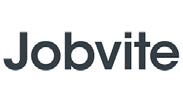
THANK YOU
PARTNER WITH US
Designing better ways to work by providing cutting-edge products and exceptional experiences within HR, Talent, Time Management, Benefits and Payroll.
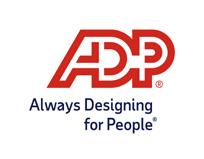
MORE
LEARN
MORE
LEARN
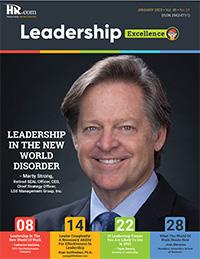
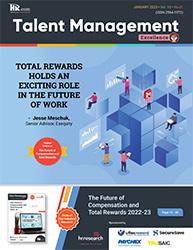
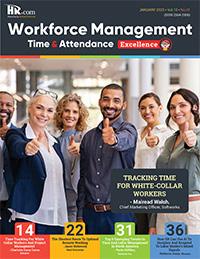
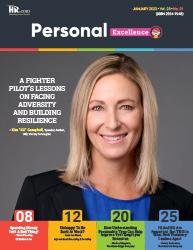

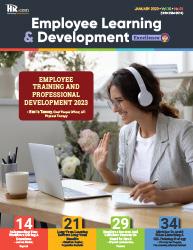
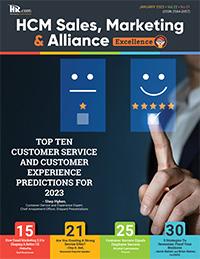
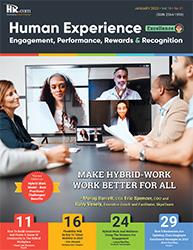

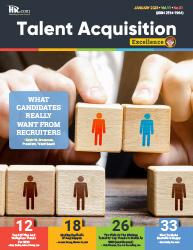

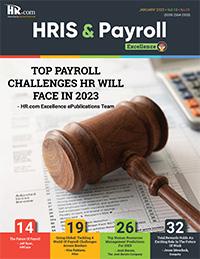
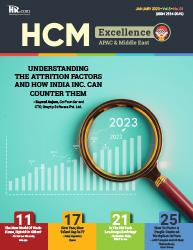
Like to submit an article? Use our online submission form or for more information go to www.hr.com/ExcellencePublications Publications 13 Targeted Publications to Reach Your Audience Informing, Educating, Enlightening and Assisting HR professionals in their personal and professional development, the Excellence series offers high-quality content through the publications!
































 Dave Ulrich
Rensis Likert Professor, Ross School of Business, University of Michigan Partner, The RBL Group
Dave Ulrich
Rensis Likert Professor, Ross School of Business, University of Michigan Partner, The RBL Group







 Allan Stolc, Founder, Bankly.dk
Allan Stolc, Founder, Bankly.dk





























































 By Connor Diemand-Yauman and Rebecca Taber Staehelin, Merit America
By Connor Diemand-Yauman and Rebecca Taber Staehelin, Merit America
























